HOLLYWOOD
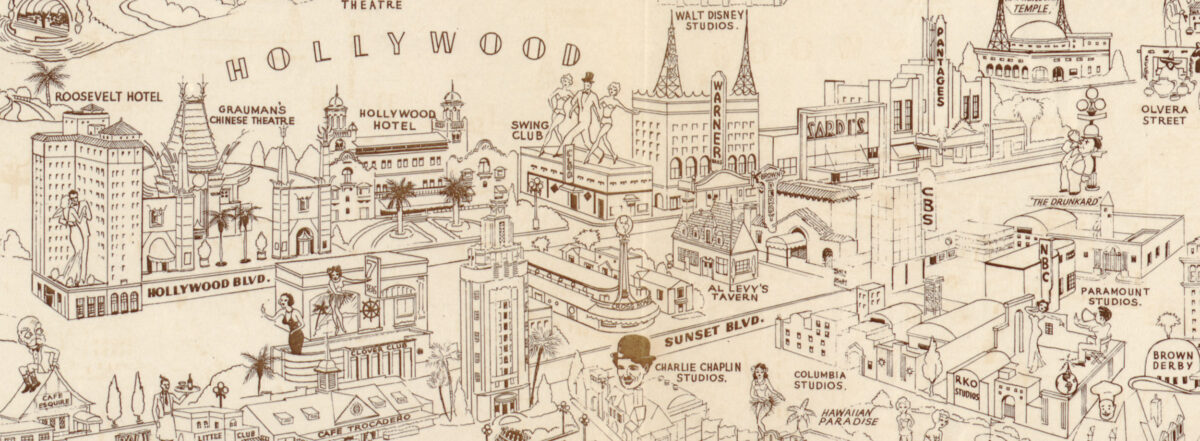
See an INDEX for this series of blog posts.
In this part: Paramount Studios / The Hollywood Walk of Fame / The death scene in Inland Empire / The Frolic Room / Cinerama Dome / Alto Nido Apartments / Hollywood Center Motel / Hollywood Athletic Club / Crossroads of the World / Capitol Records / Mural at Sunset and Vine / Philip Marlowe’s office / Amoeba Music
PARAMOUNT STUDIOS
During my trip to L.A., I took the Paramount Studio Tour—a fun time for movie fans. The $60, two-hour tour takes you through the backlots where film crews are at work.
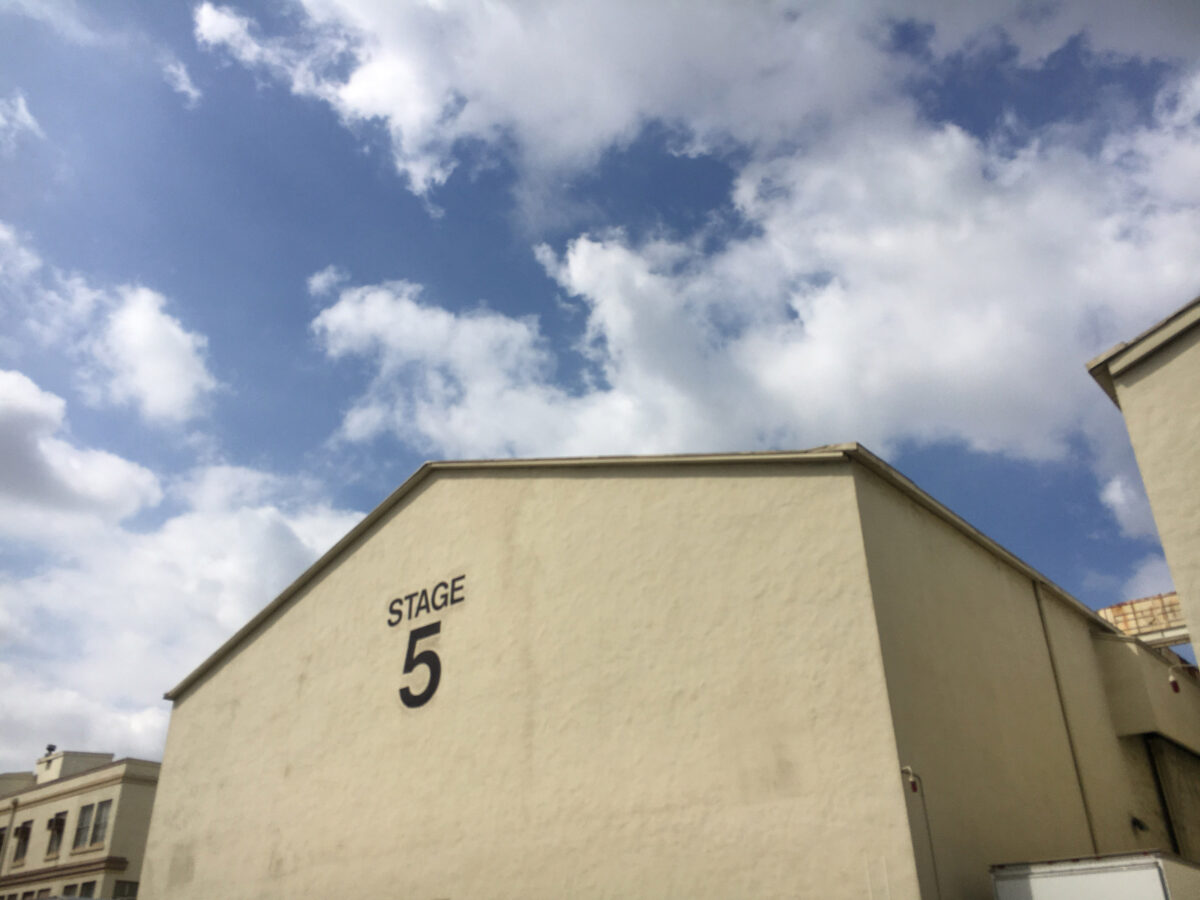
I didn’t spot any movie stars, but I still got a thrill out of sensing the work of movies being made nearby. And I loved seeing those big beige buildings where filmmakers create their fictional worlds—including one where Alfred Hitchcock’s team surreptitiously excavated the floor to create more vertical height for the set of Rear Window. (That’s the story our tour guide told us, anyway.)
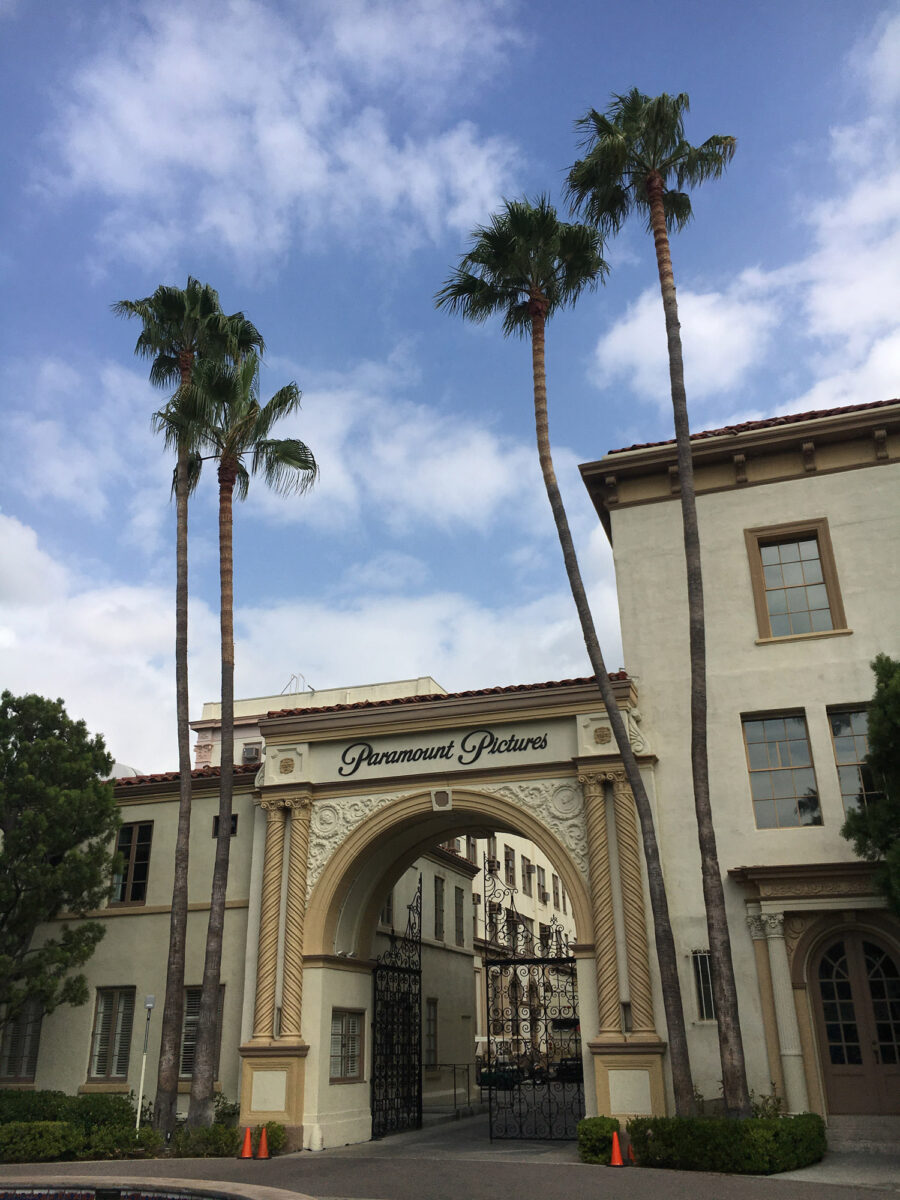
Bronson Gate used to be Paramount’s main entrance, but the studio complex expanded, taking over the street in front of it. It’s visible in many movies, including Billy Wilder’s 1950 classic Sunset Boulevard and David Lynch’s Mulholland Drive. In Lynch’s film, the same car that was featured so prominently in Sunset Boulevard—the luxurious 1929 Isotta Fraschini 8A owned by silent film star Norma Desmond (Gloria Swanson)—is seen parked just beyond Bronson Gate.
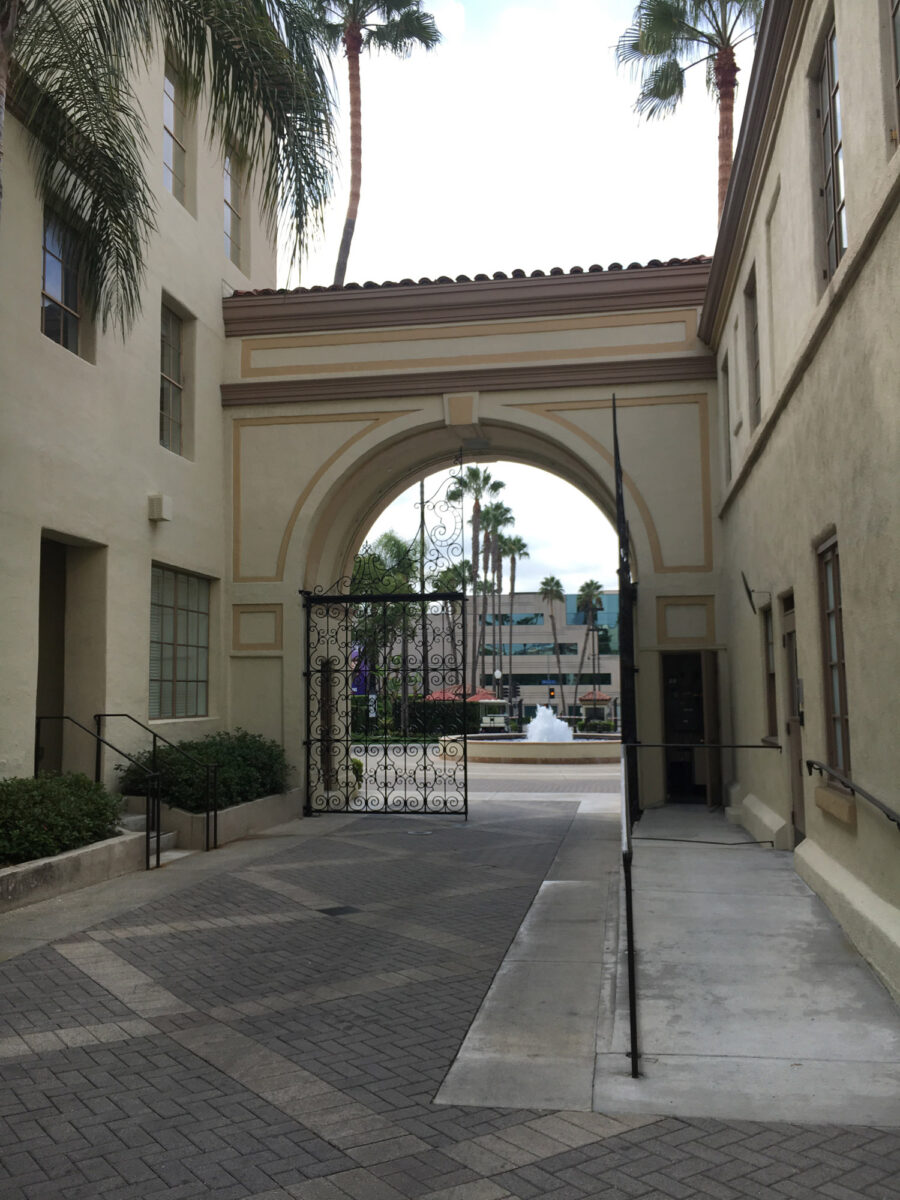
It’s said to be good luck to touch the metal of the Bronson Gate as you enter Paramount. But our tour guide warned us: When you’re walking out through the gates, it’s bad luck to touch them.
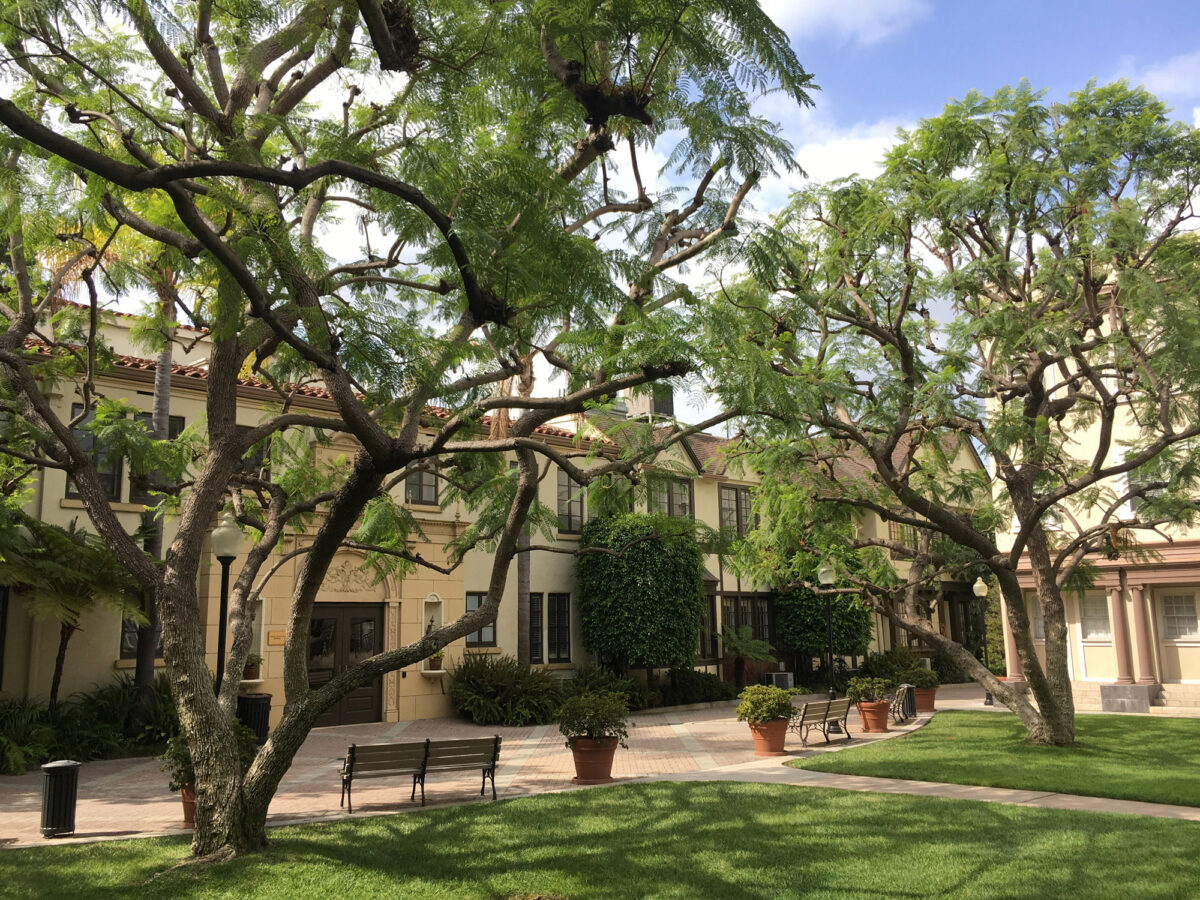
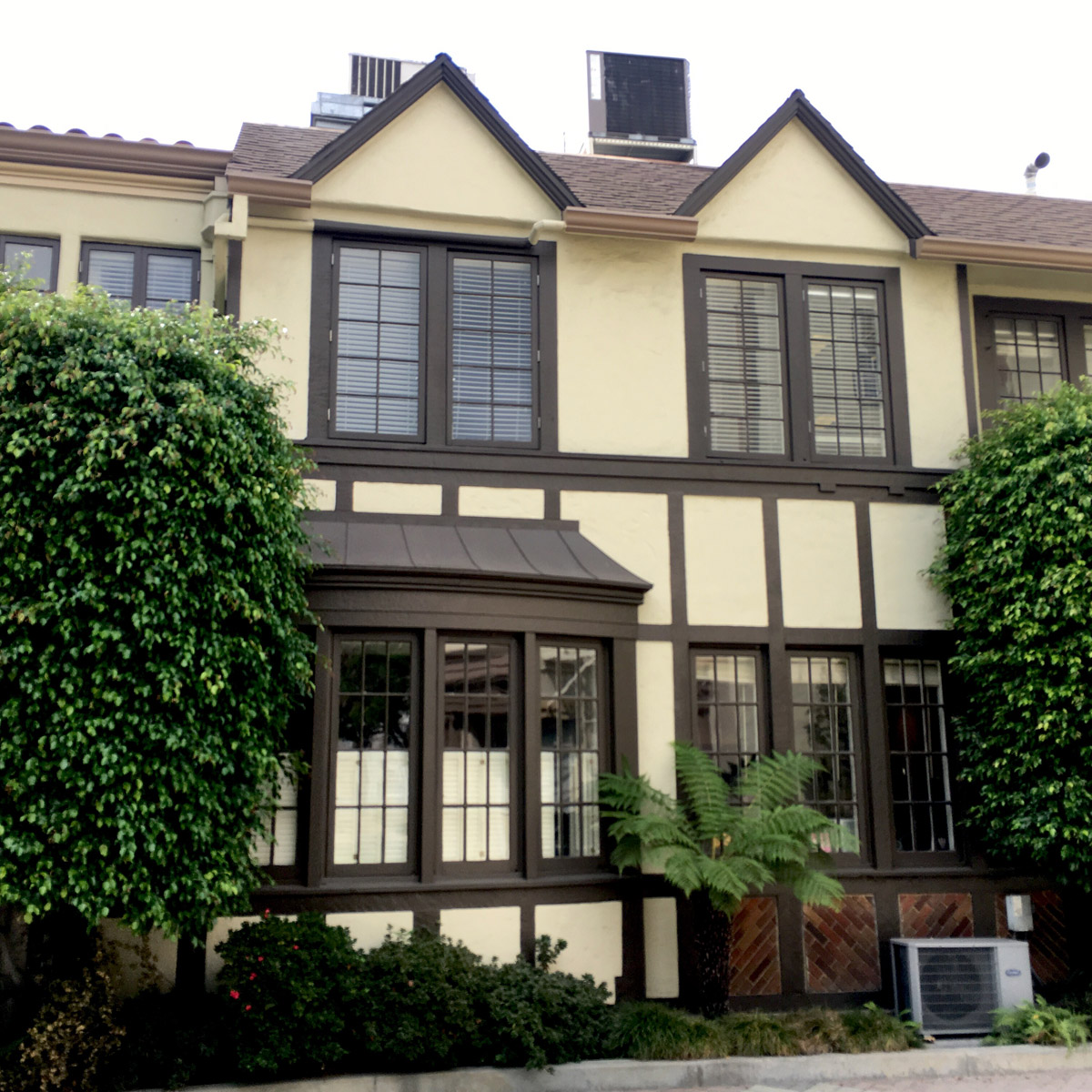
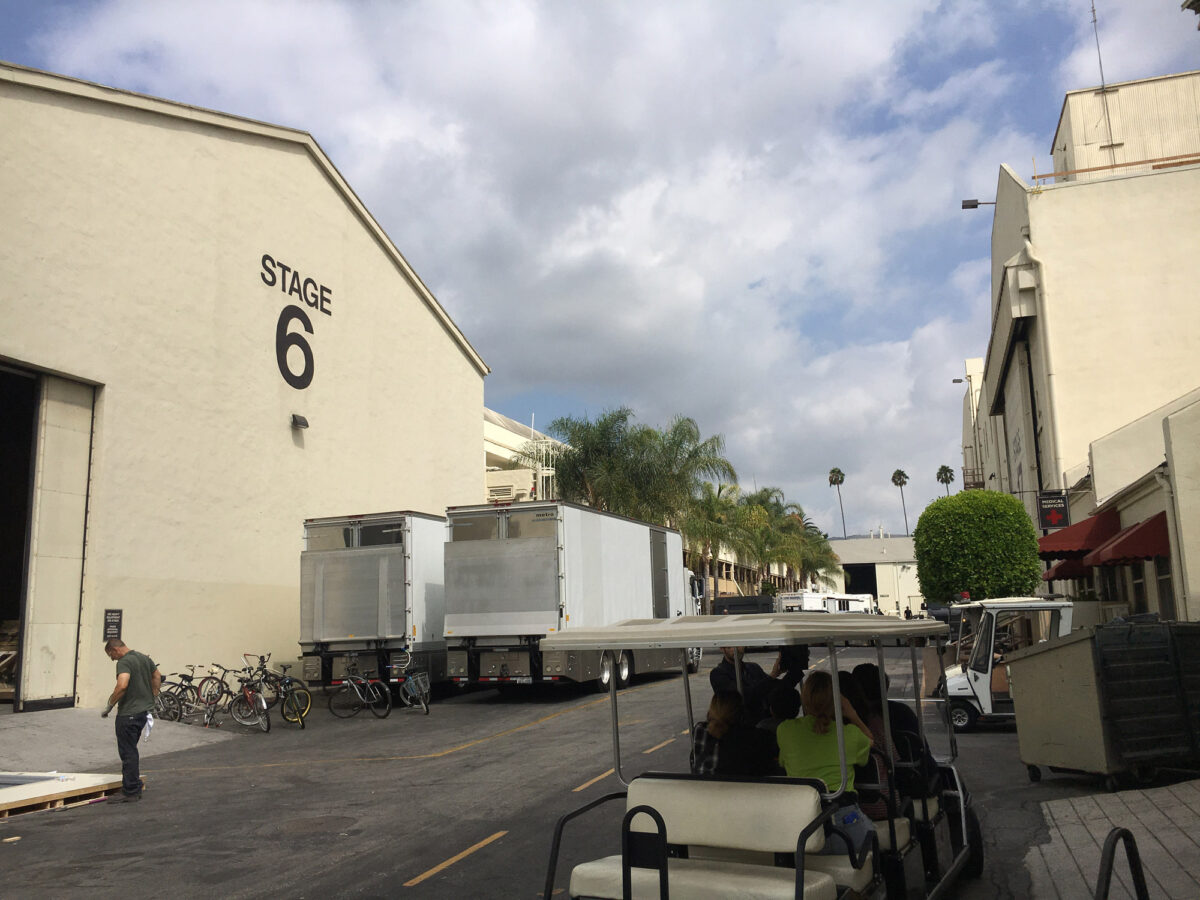
[Addendum, November 7, 2019 — I didn’t realize it at the time, but the above photo shows the area of the Paramount complex where David Lynch filmed scenes for Inland Empire. The movie within the movie, On High in Blue Tomorrows, is filmed inside Stage 4, a building just right of where I took this picture. That’s where Laura Dern’s character, actress Nikki Grace, gets lost within the movie sets, entering different layers of reality. Near the end of Inland Empire, Dern’s character exits Stage 4, coming out into this area, where Stages 5 and 6 are visible across the roadway. That’s when some red curtains mysteriously appear, taking Dern’s character into an old movie theater and back into another world. Earlier in Inland Empire, Paramount Stage 32 is also briefly visible—a building near the fake streets of New York.]
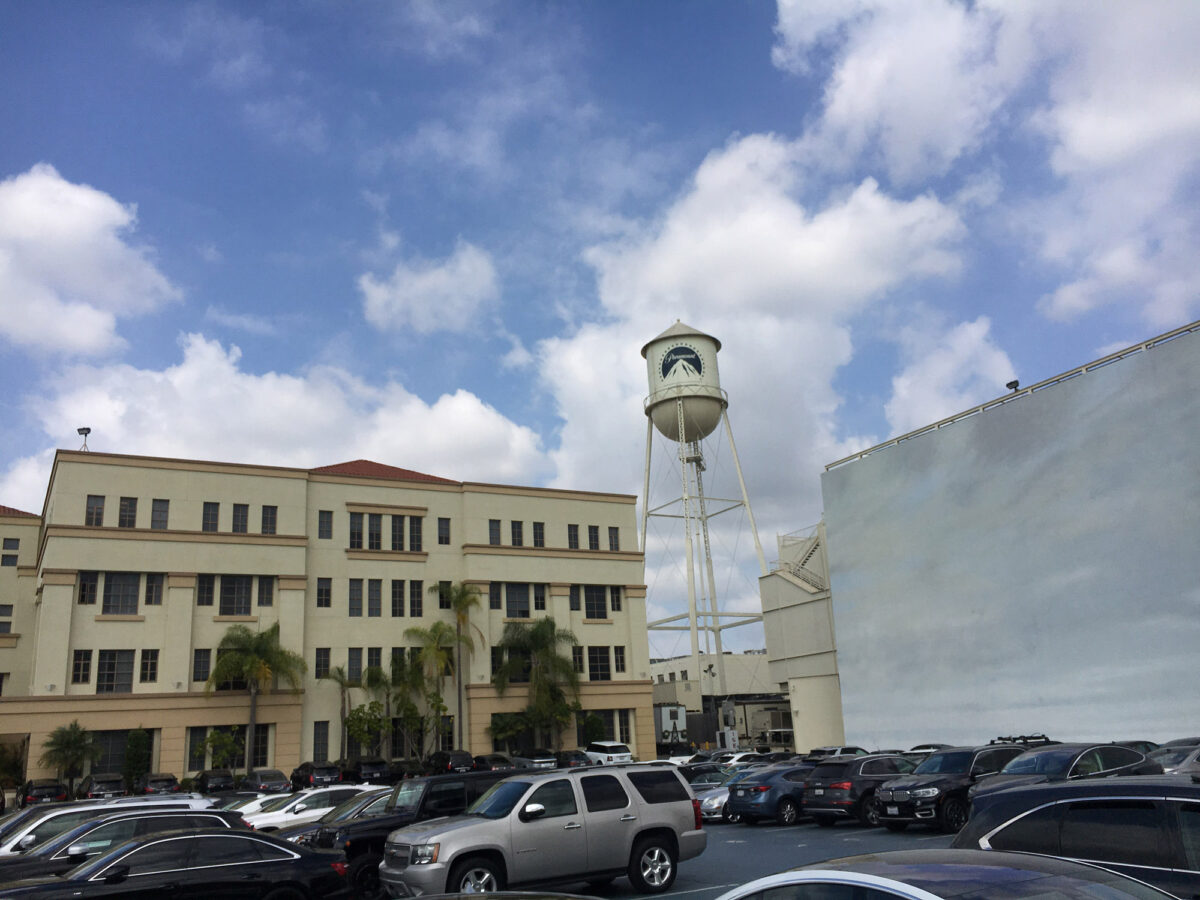
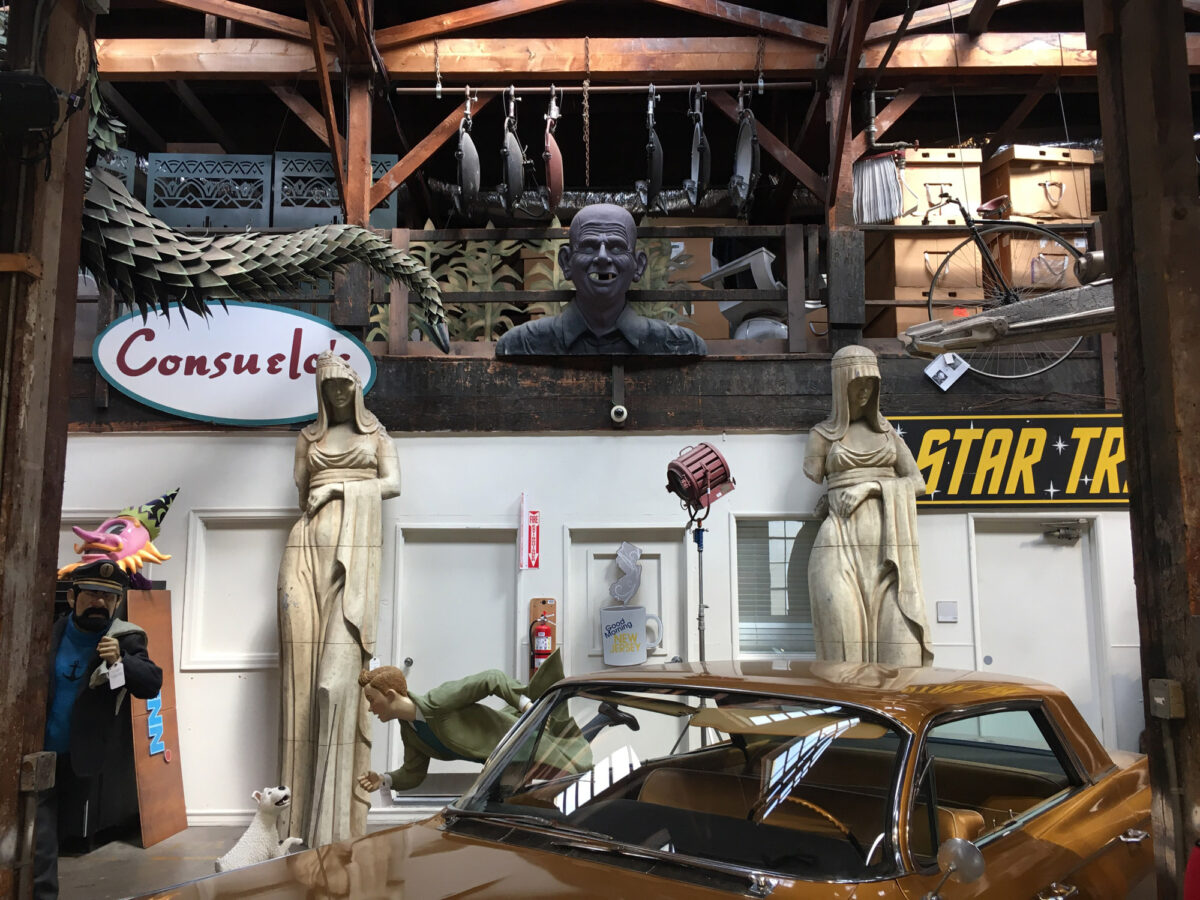
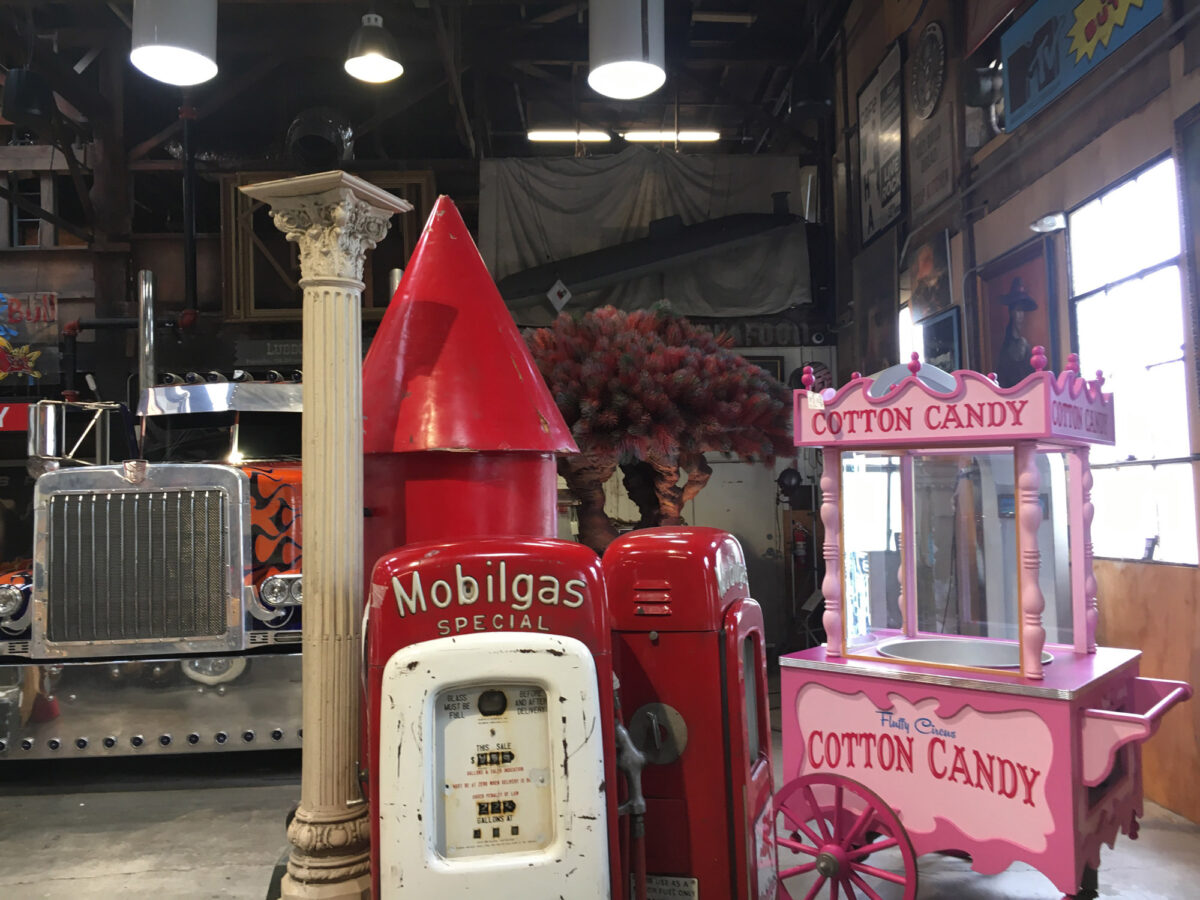
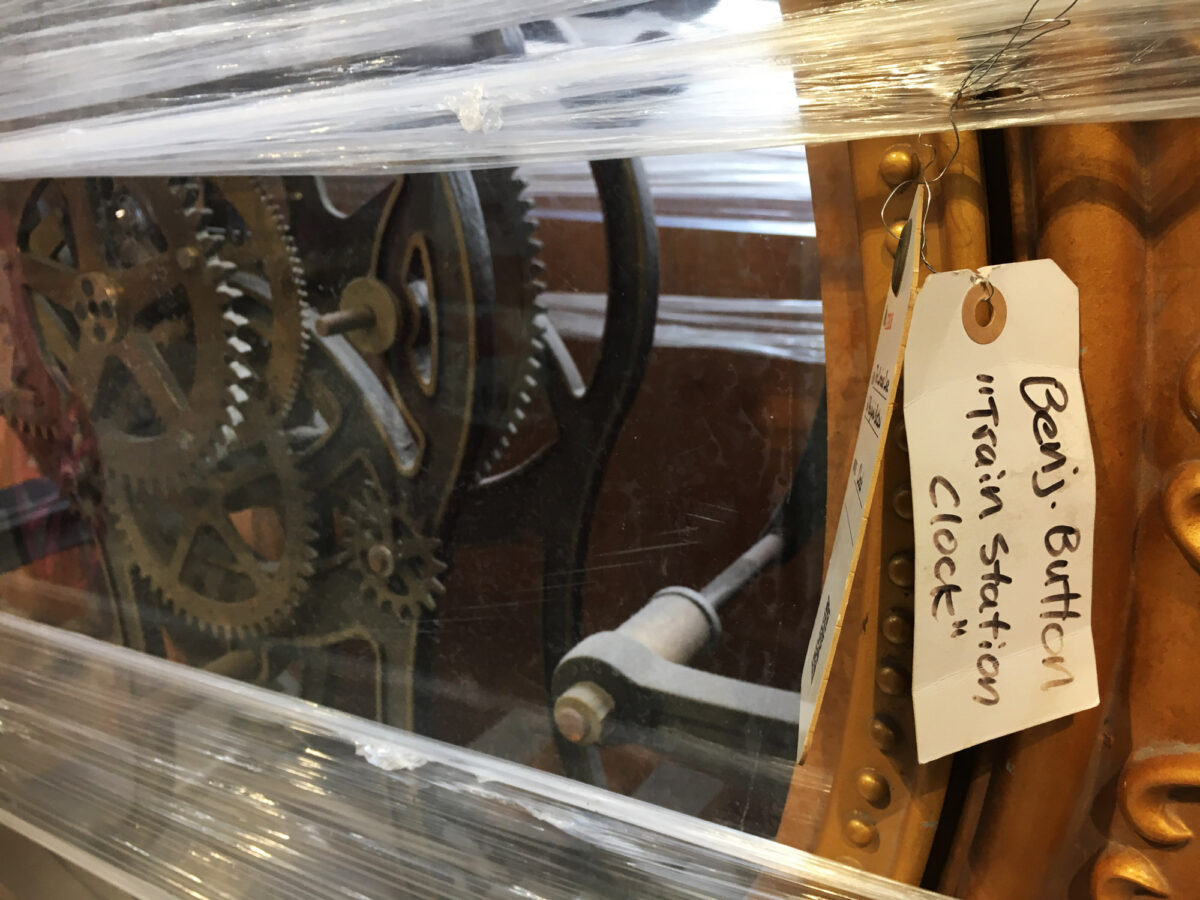
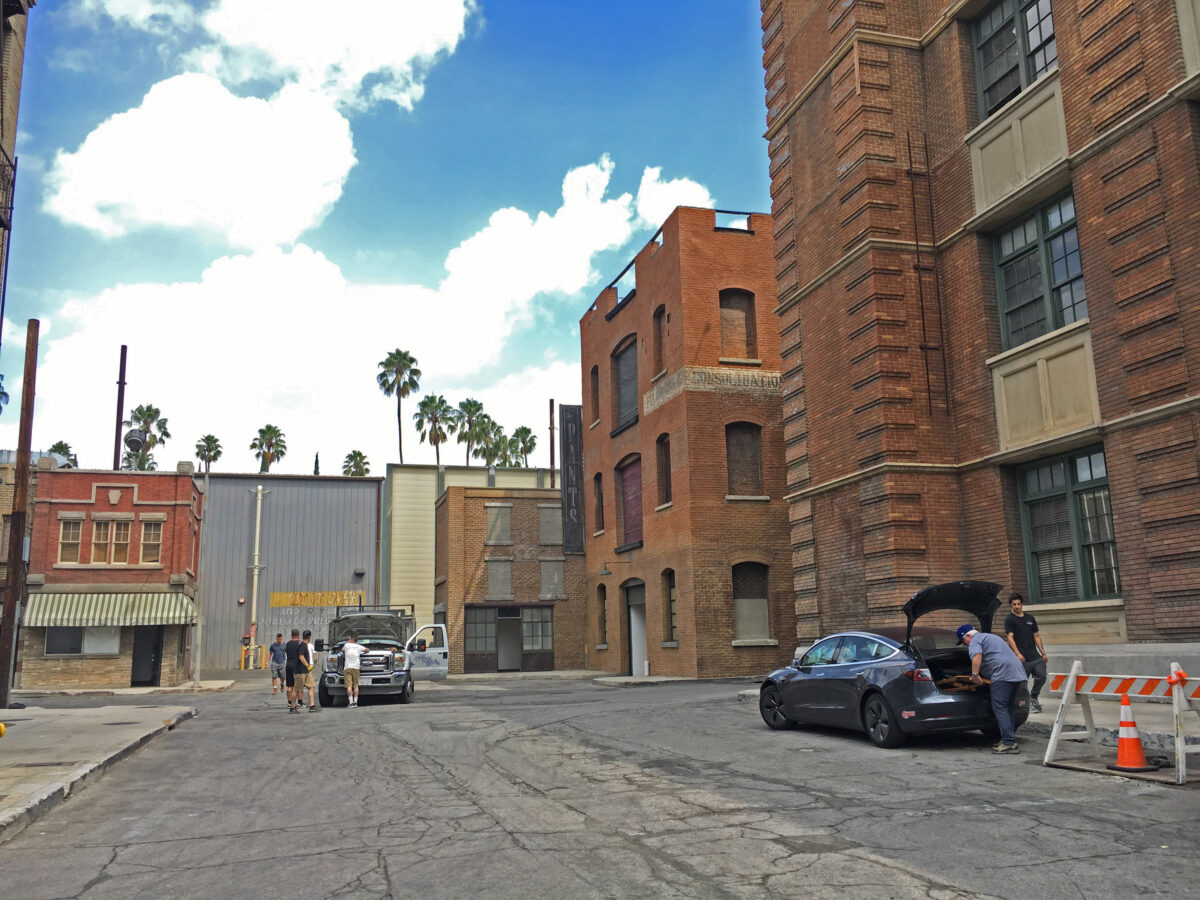
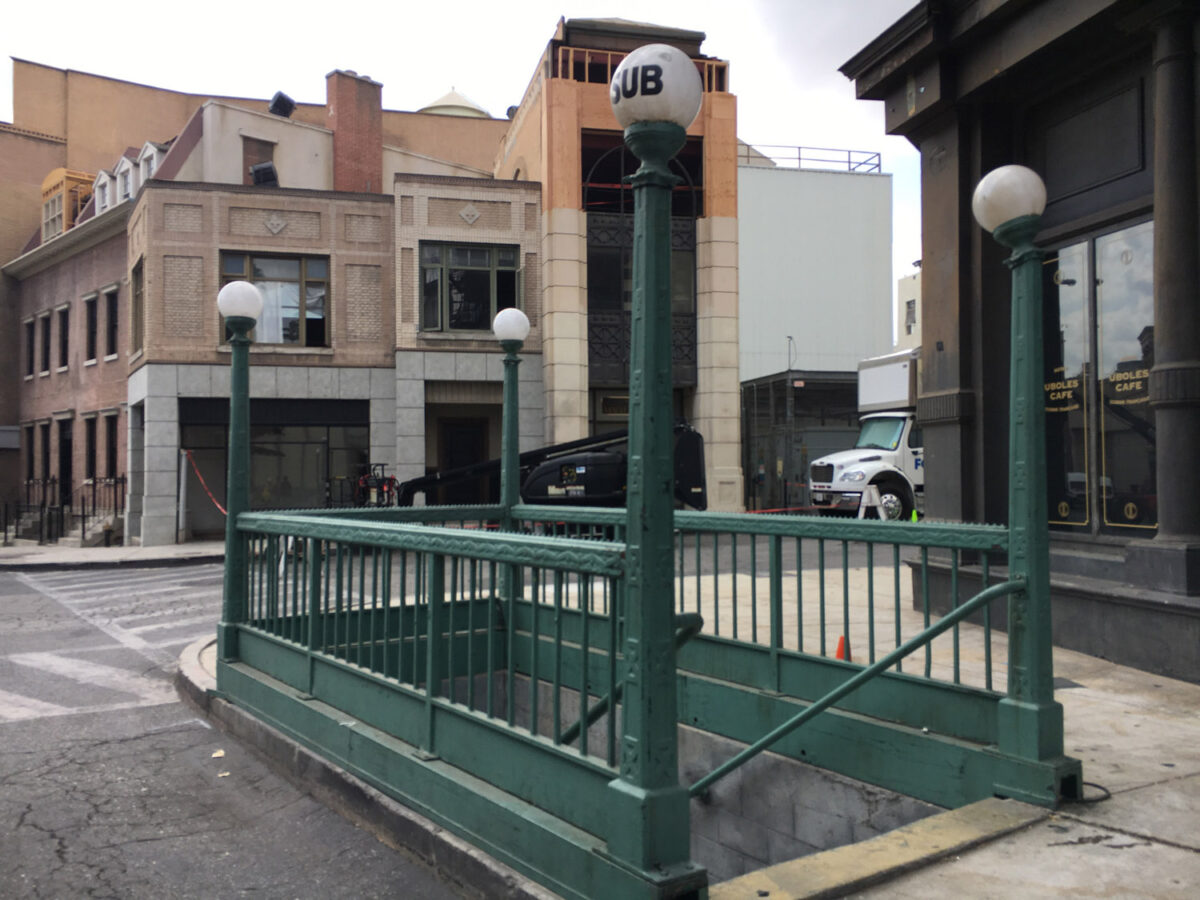
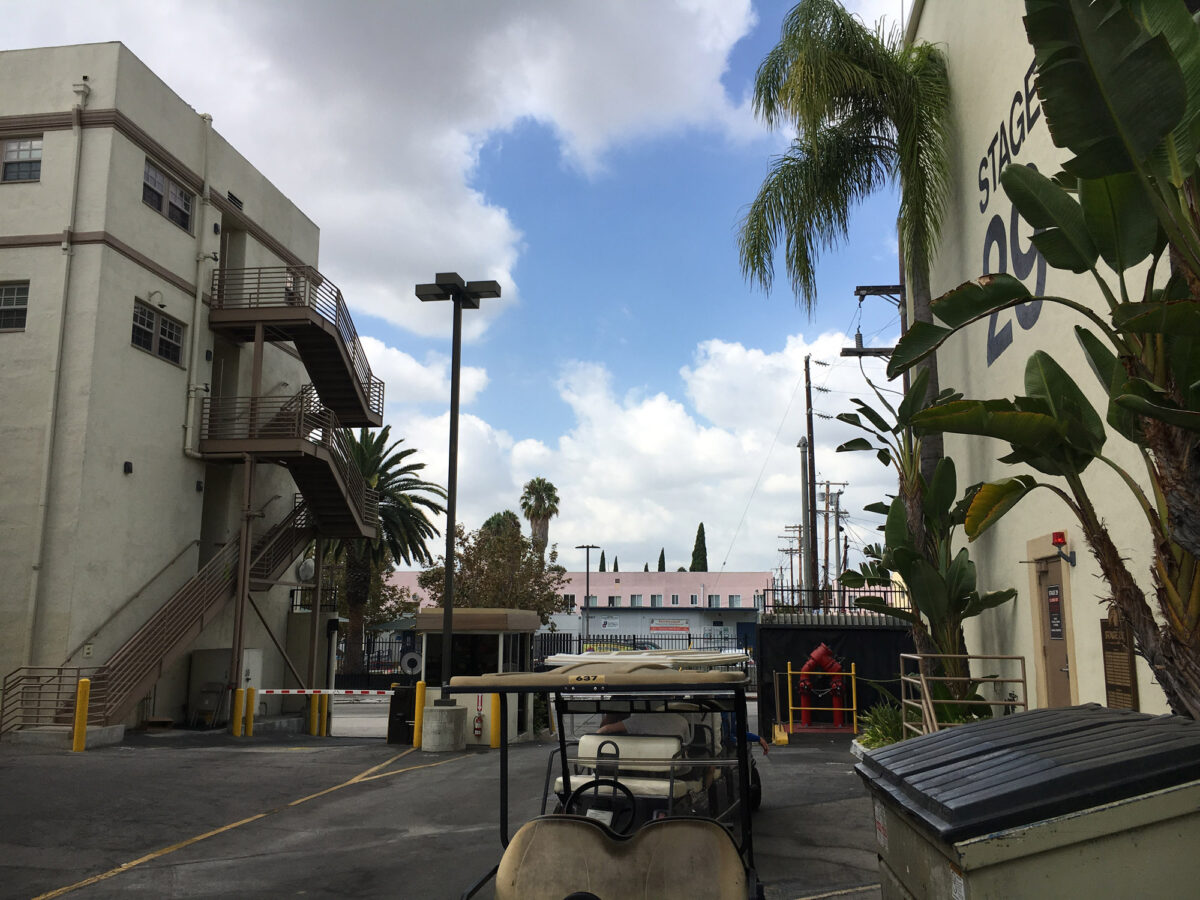
THE HOLLYWOOD WALK OF FAME
I didn’t realize that the Hollywood Walk of Fame sprawled across quite as many blocks as it does. When I arrived in the Hollywood area of Los Angeles, two of the first stars I noticed in the sidewalks were those honoring Oliver Hardy and Orson Welles.
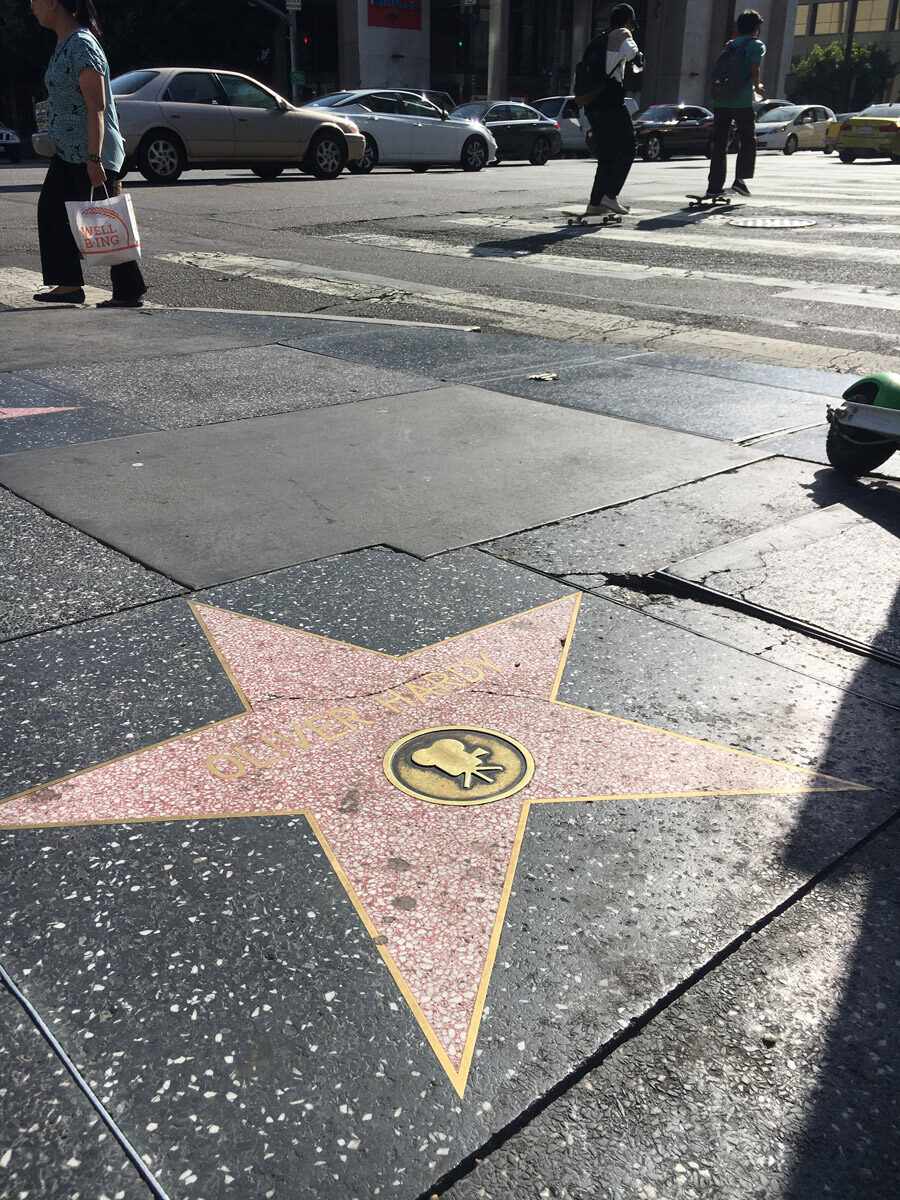
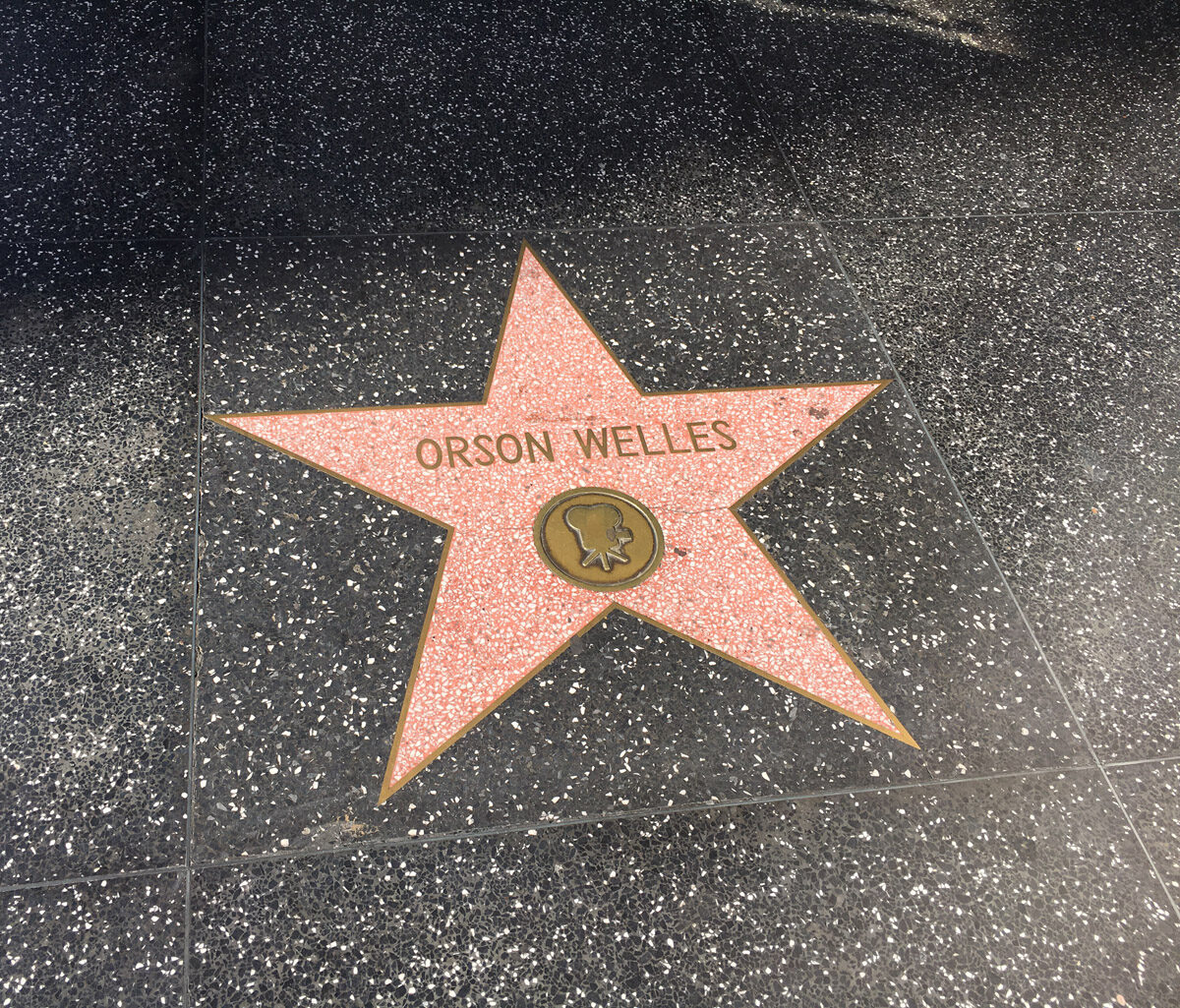
I couldn’t help noticing the shoddy condition of the stars in some areas of Hollywood. Most of the damaged stars I noticed were blank ones.
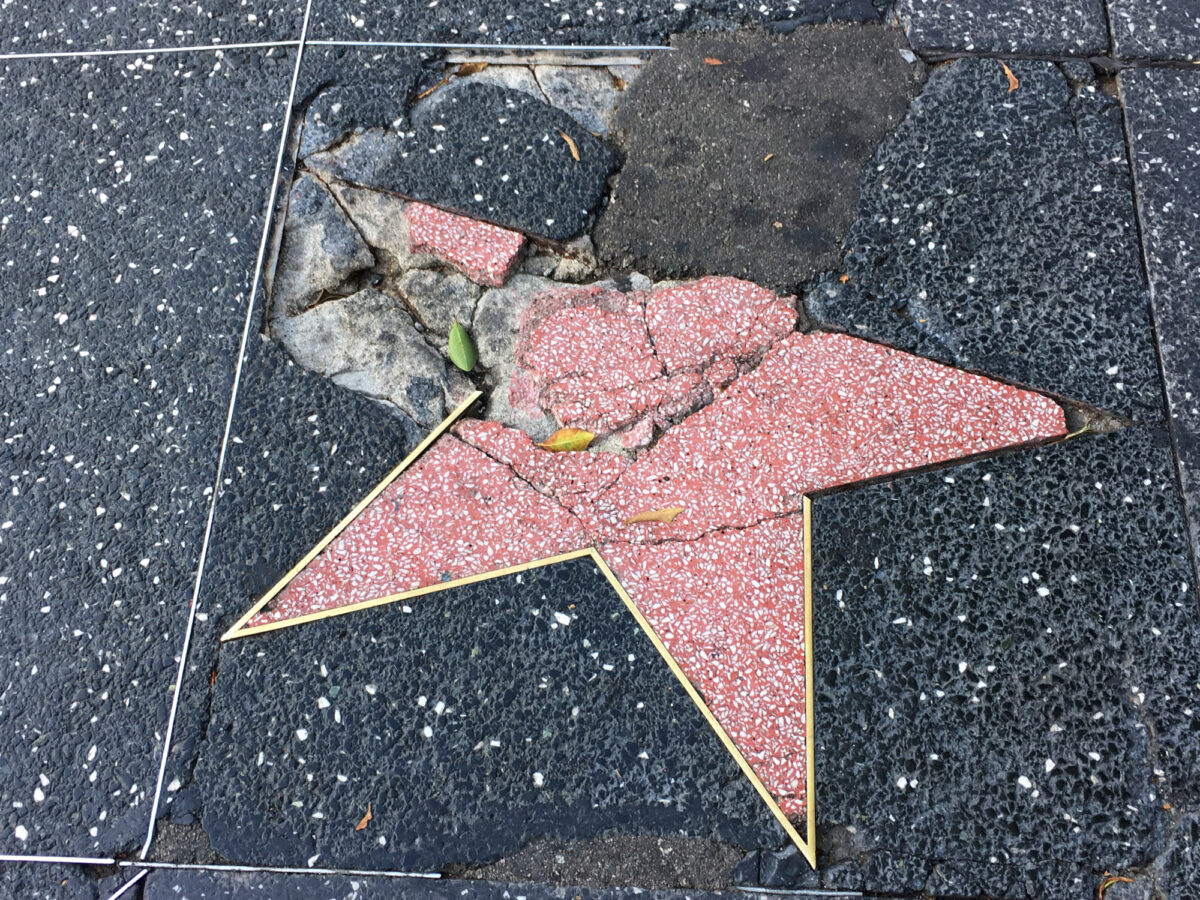
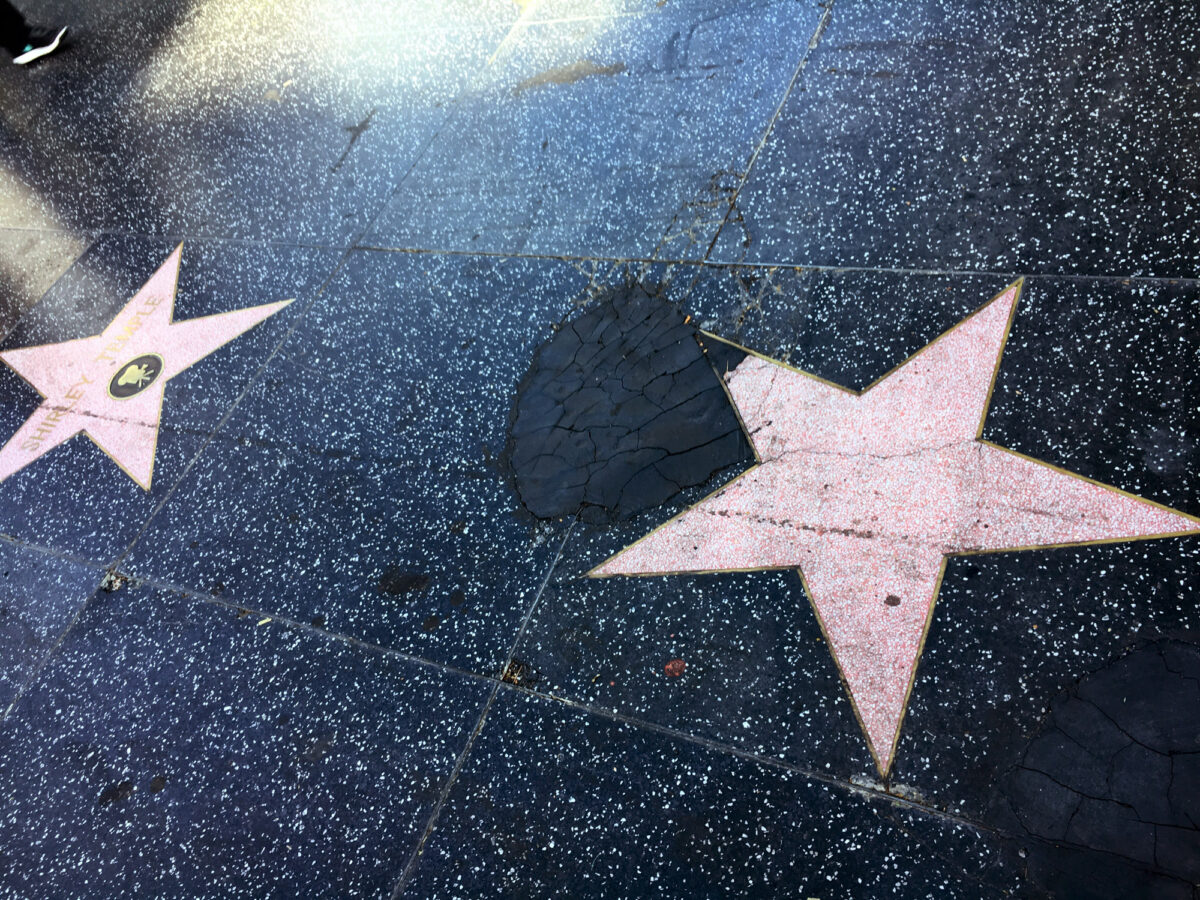
THE DEATH SCENE IN INLAND EMPIRE
Seeing those stars on Hollywood’s sidewalks got me thinking about one of the most memorable moments in David Lynch’s 2006 movie Inland Empire: the scene where Laura Dern’s character dies on a Hollywood Boulevard sidewalk, surrounded by street people who are either unfazed by her dire condition and oblivious to it.
“You dyin’, lady.”
As Dern recalled in an interview with Los Angeles Magazine: “My character dies on a star near Hollywood and Vine. Right on the Hollywood Walk of Fame. Not that far from Grauman’s.”
In the film, Dern’s character (or her characters?) wanders back and forth on these streets. At times, the geography may be deliberately jumbled, like the movie itself.
Dern is near a pay phone at 6330 Hollywood Boulevard when she sees her doppelgänger across the street. At another point, she’s near a pay phone at 6331 Hollywood Boulevard, over on that side of the street.

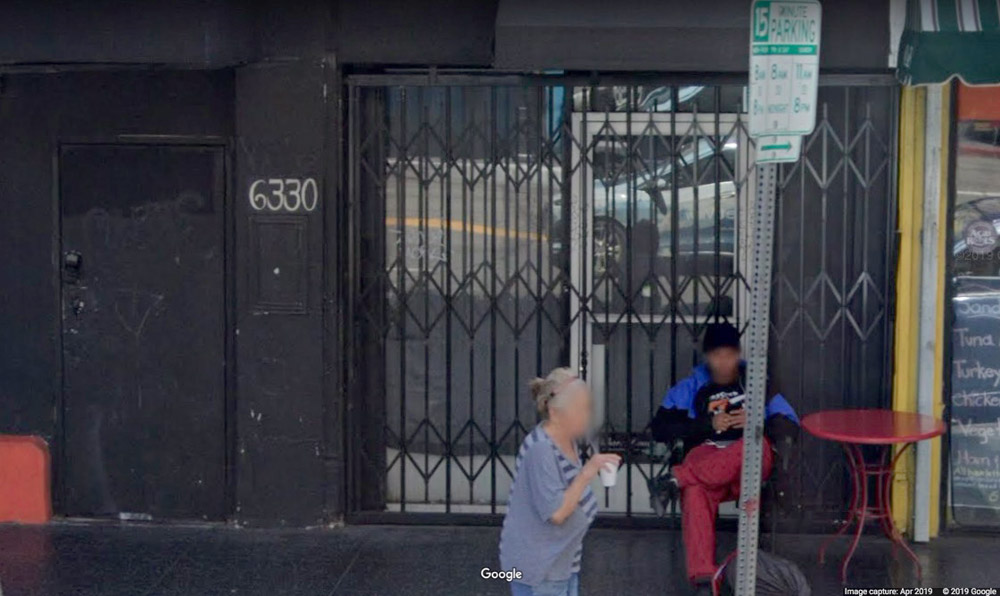
Dern enters a nightclub somewhere in the vicinity. Later, when she is back on the streets, she is stabbed—right next to the sidewalk star for actress Dorothy Lamour, at 6332 Hollywood Boulevard.
But after the stabbing, Dern is seen walking north on Vine Street, going through the intersection of Hollywood and Vine, and heading west on Hollywood Boulevard.

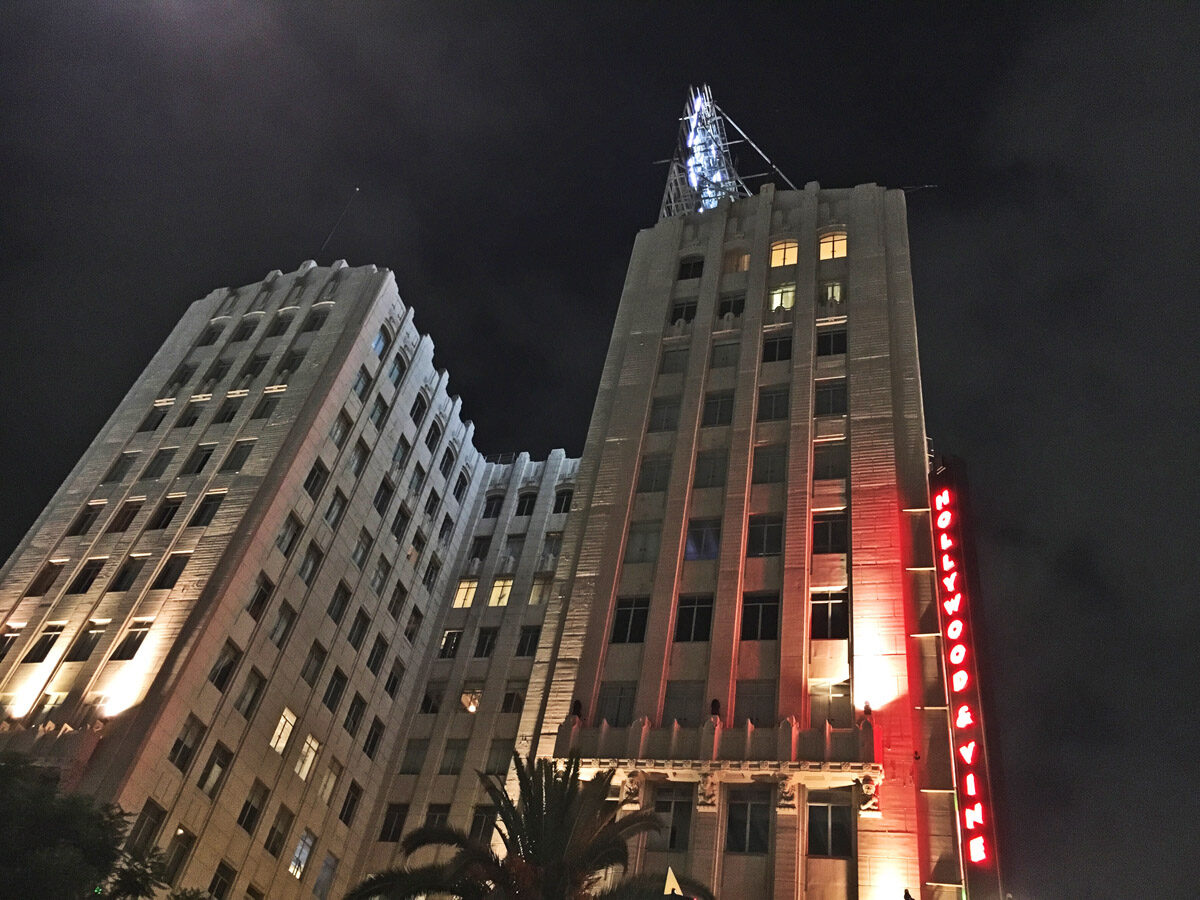
A Starbucks currently occupies the corner space in a building seen behind Dern as she walks through the intersection.
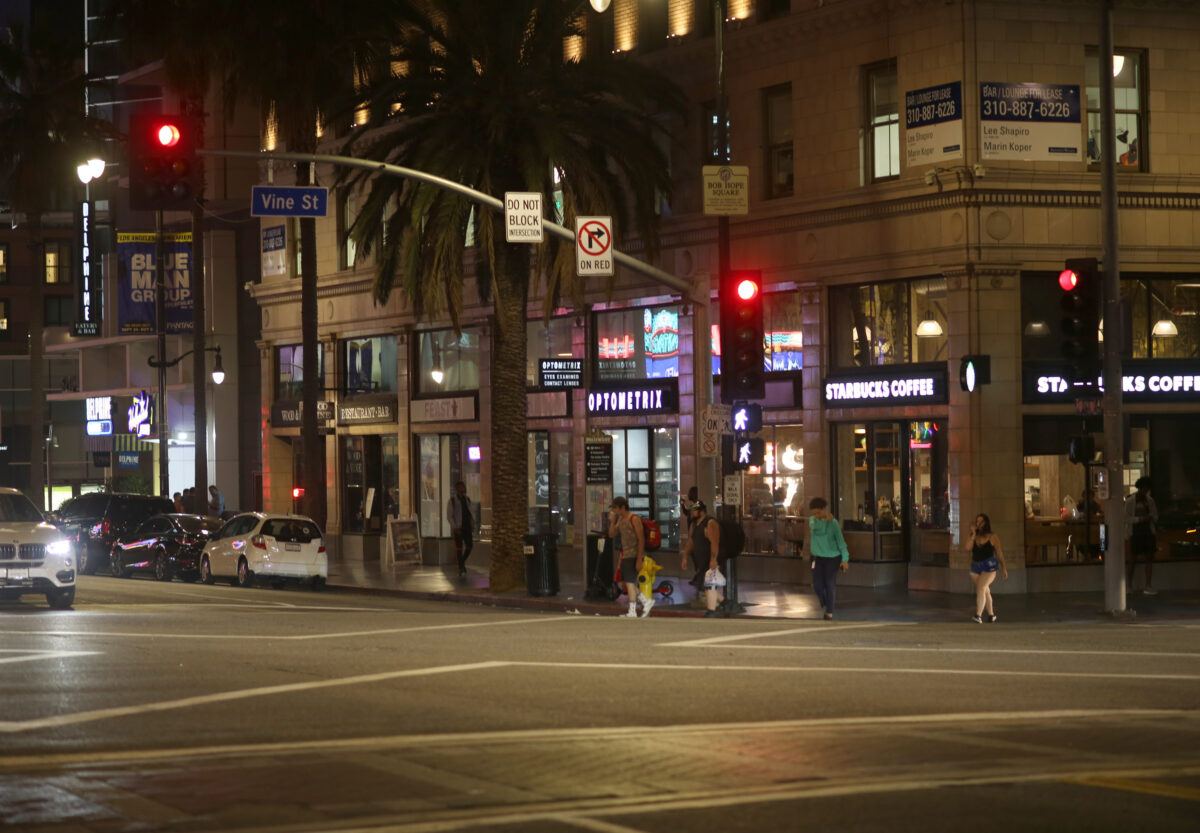
On the block of Hollywood Boulevard west of Vine Street, there’s a club called Dejà Vu Showgirls …
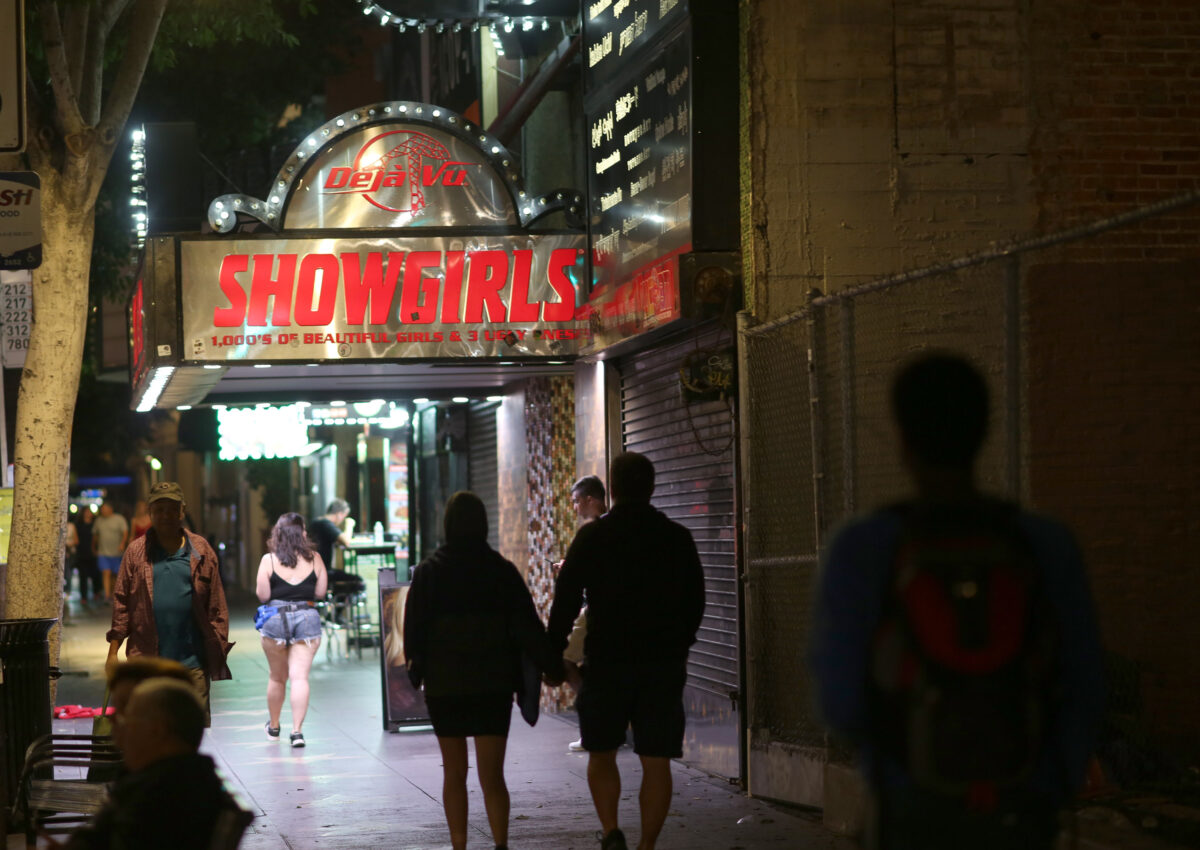
Along with the star for Gloria Swanson, among others …
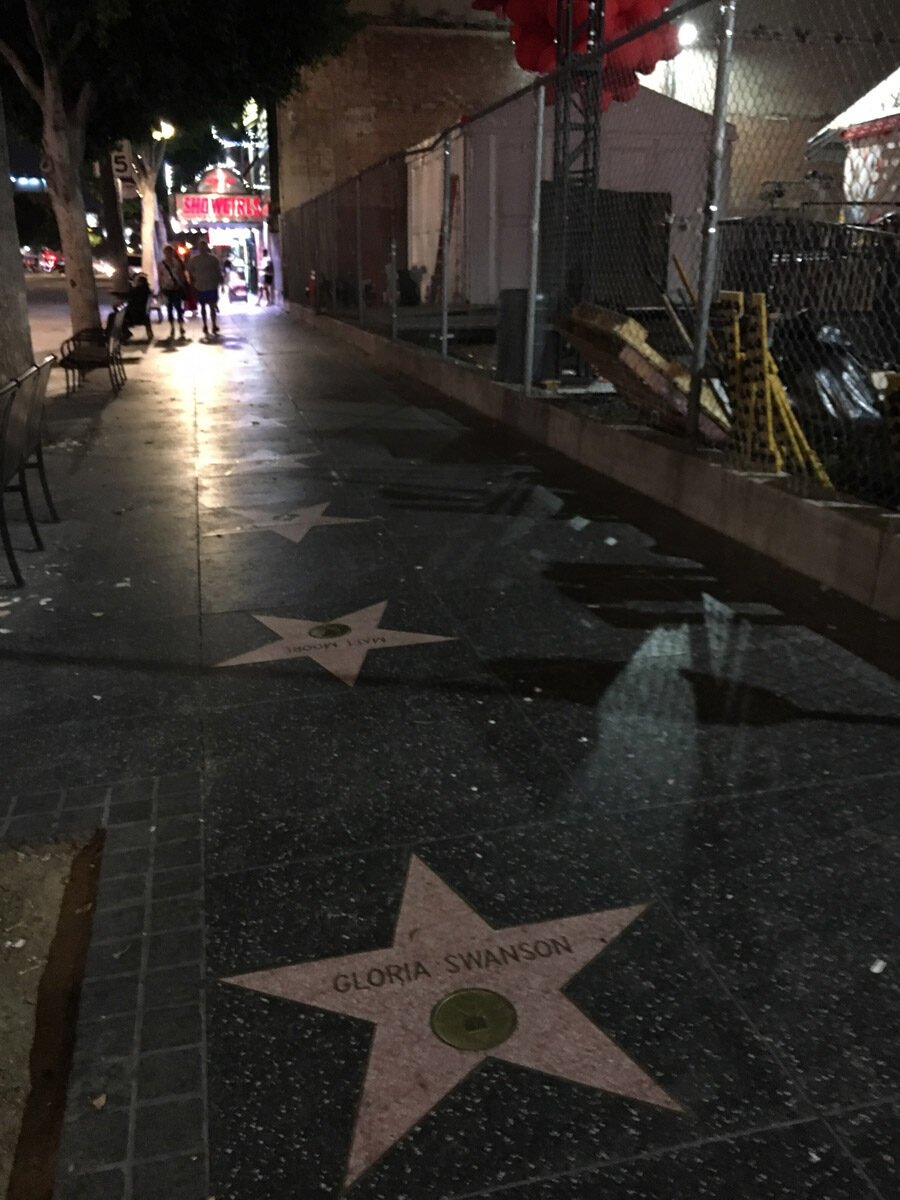
And there’s a lot where a promotional display for the movie It Chapter Two was being dismantled at the time of my visit…
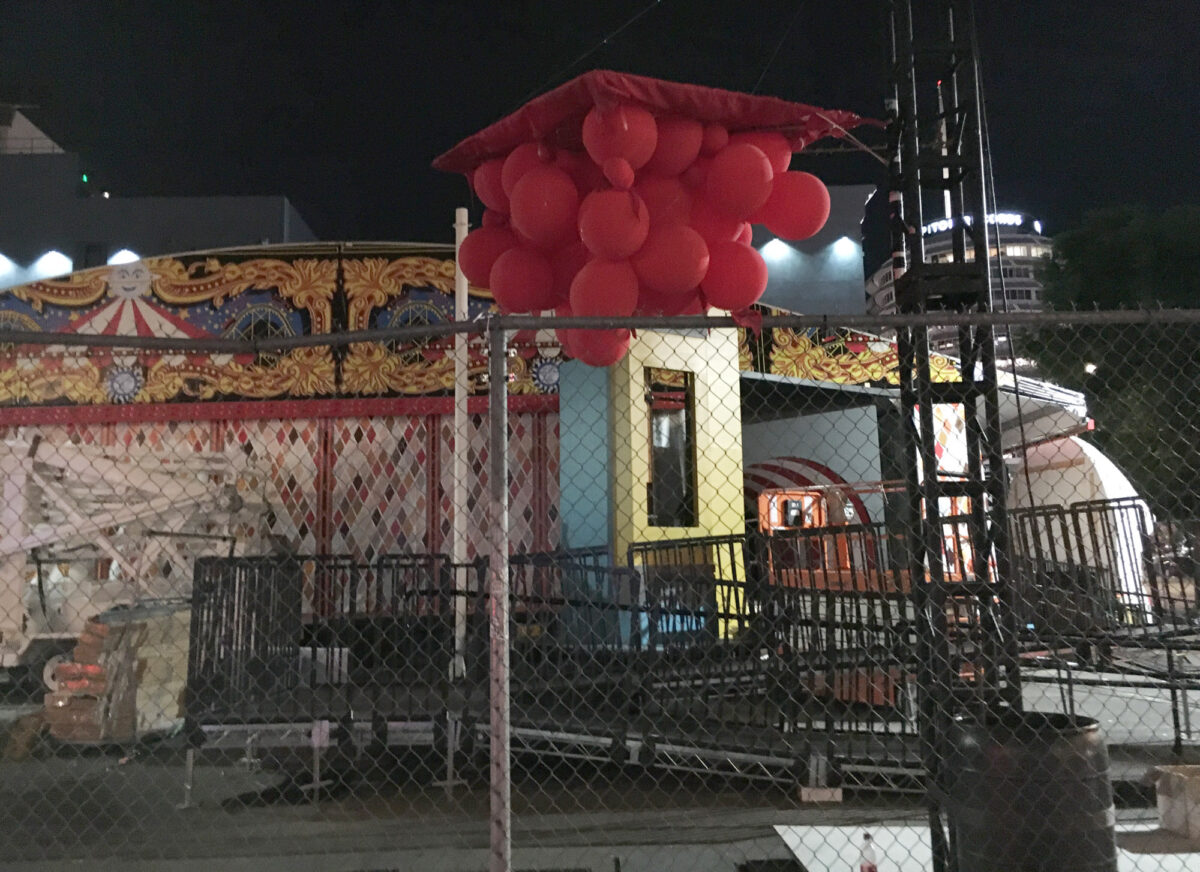
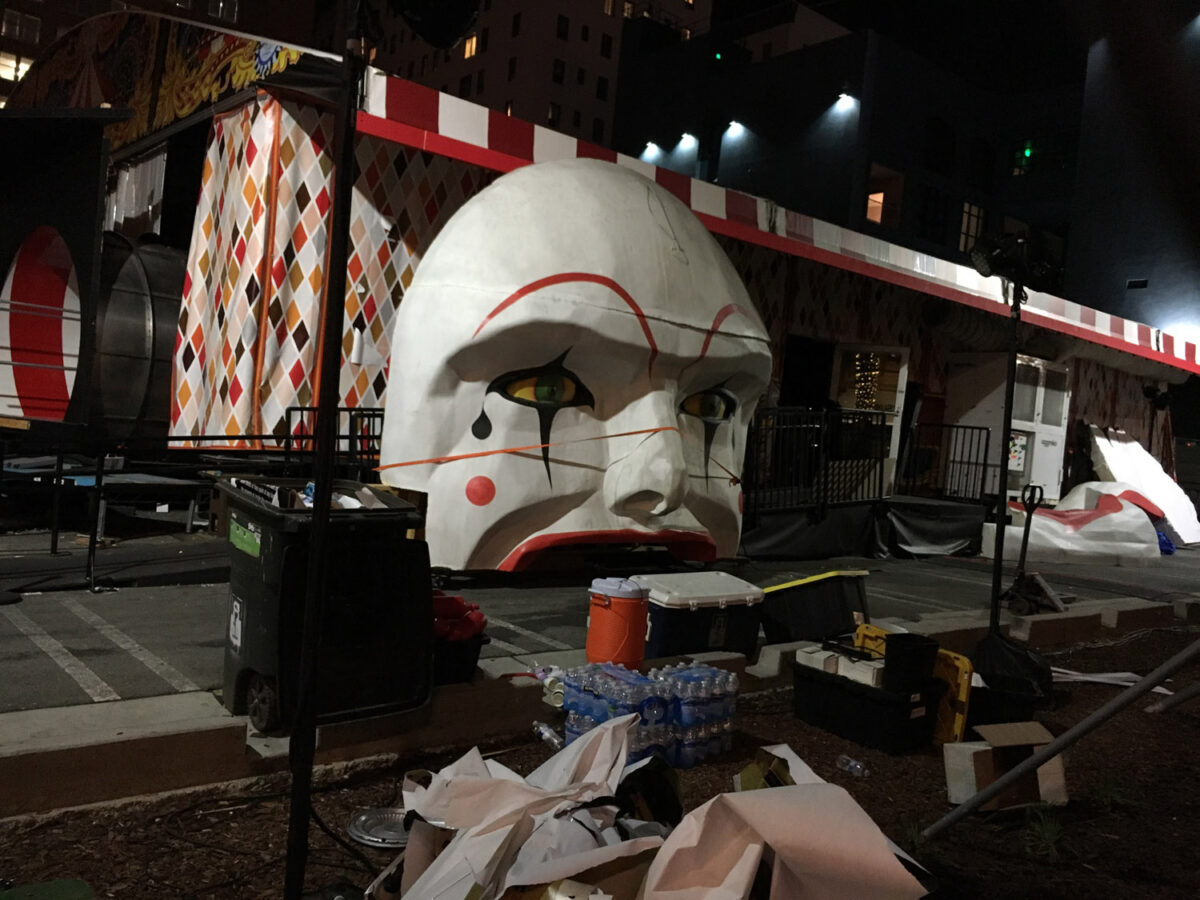
And the Church of Scientology’s L. Ron Hubbard Life Exhibition was open late at night, with a bust of Hubbard visible through the open doors, sitting in front of a shimmering screen. This place is visible in the background of the scenes in Inland Empire.
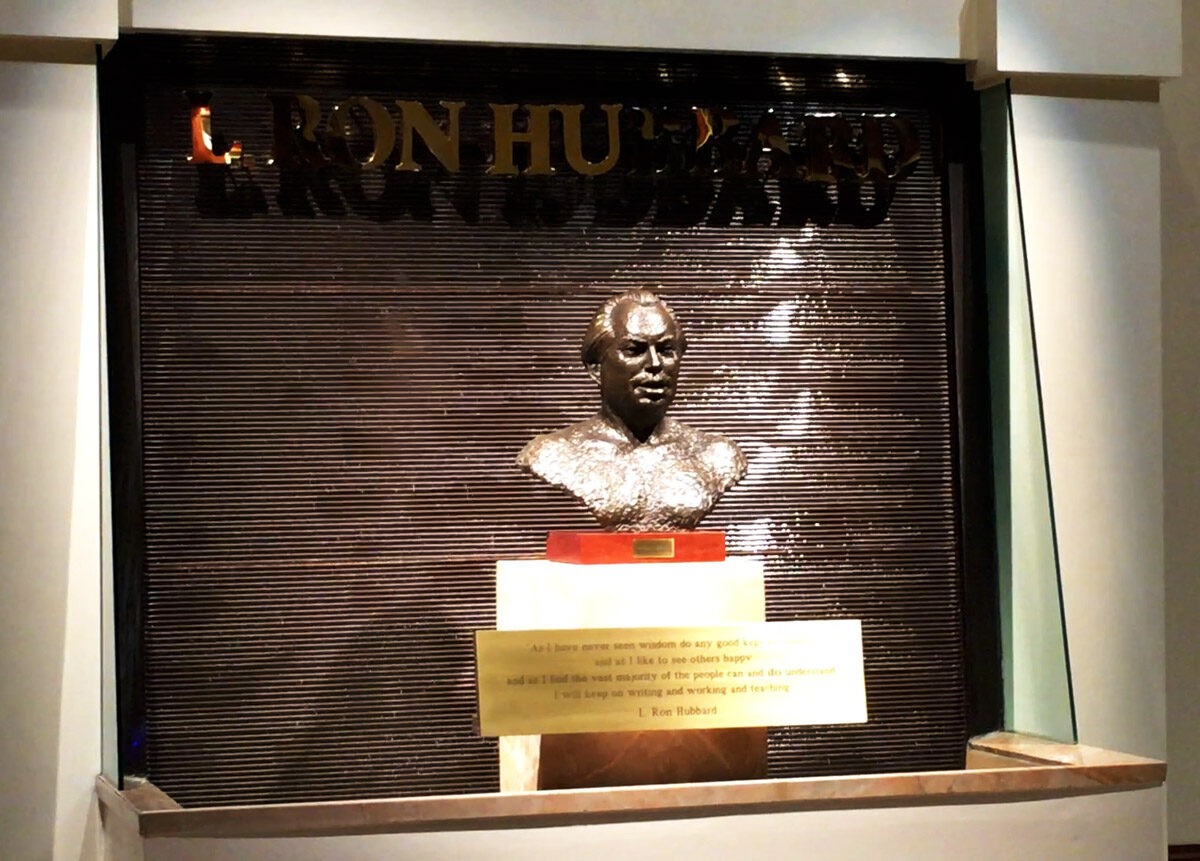
But soon after Dern is seen walking west on the street, another shot shows her walking east on the same block, with some of the buildings on Ivar Avenue behind her.

At nighttime, some of the storefronts on this block were covered by metal shutters, just like the ones seen behind Dern as she dies in Inland Empire.
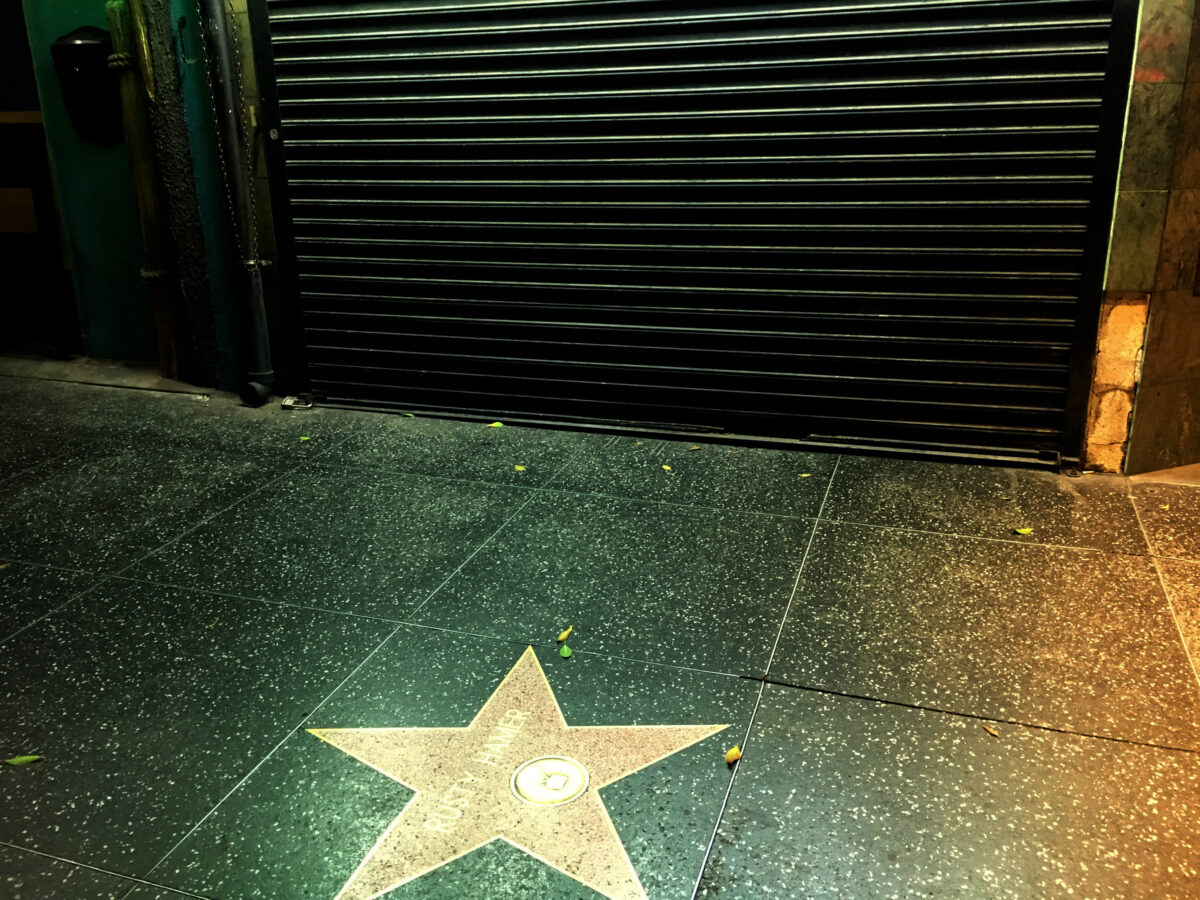
This is what the south side of the street looks like:
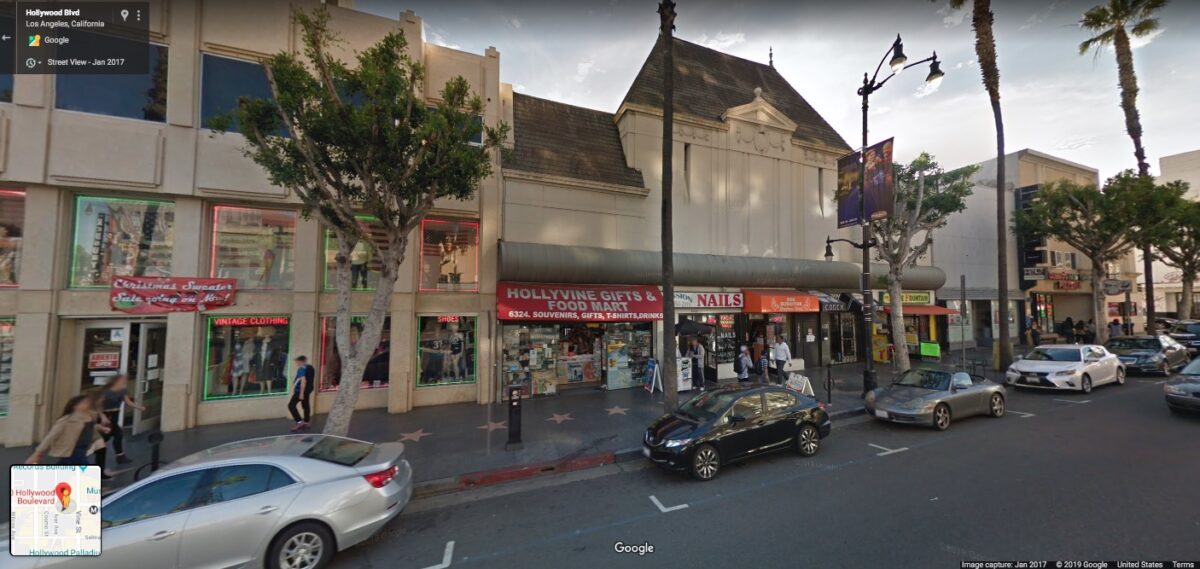
The grainy, digital look of Lynch’s Inland Empire makes it difficult to decipher details such as the names on the stars in the Hollywood Walk of Fame. So I wasn’t able to pinpoint exactly where Dern is shown vomiting up blood and dying. But I do know I was somewhere on the same block. (Or were the final moments of that scene filmed inside a studio, as the movie itself suggests?)
THE FROLIC ROOM
A block east from this scene, the Frolic Room is one of Hollywood’s most famous bars—an old-school joint that opened to the public in 1934 (after operating as a private speakeasy lounge called Freddy’s).
Charles Bukowski was said to be a regular, and the Frolic Room was reportedly the last place that Elizabeth Short, the murder victim known as the Black Dahlia, was seen alive. Brian DePalma’s 2006 movie of The Black Dahlia used the bar as a location, as did L.A. Confidential. And Howard Hughes owned both this place, along with the adjacent Theatre, from 1949 to 1954.
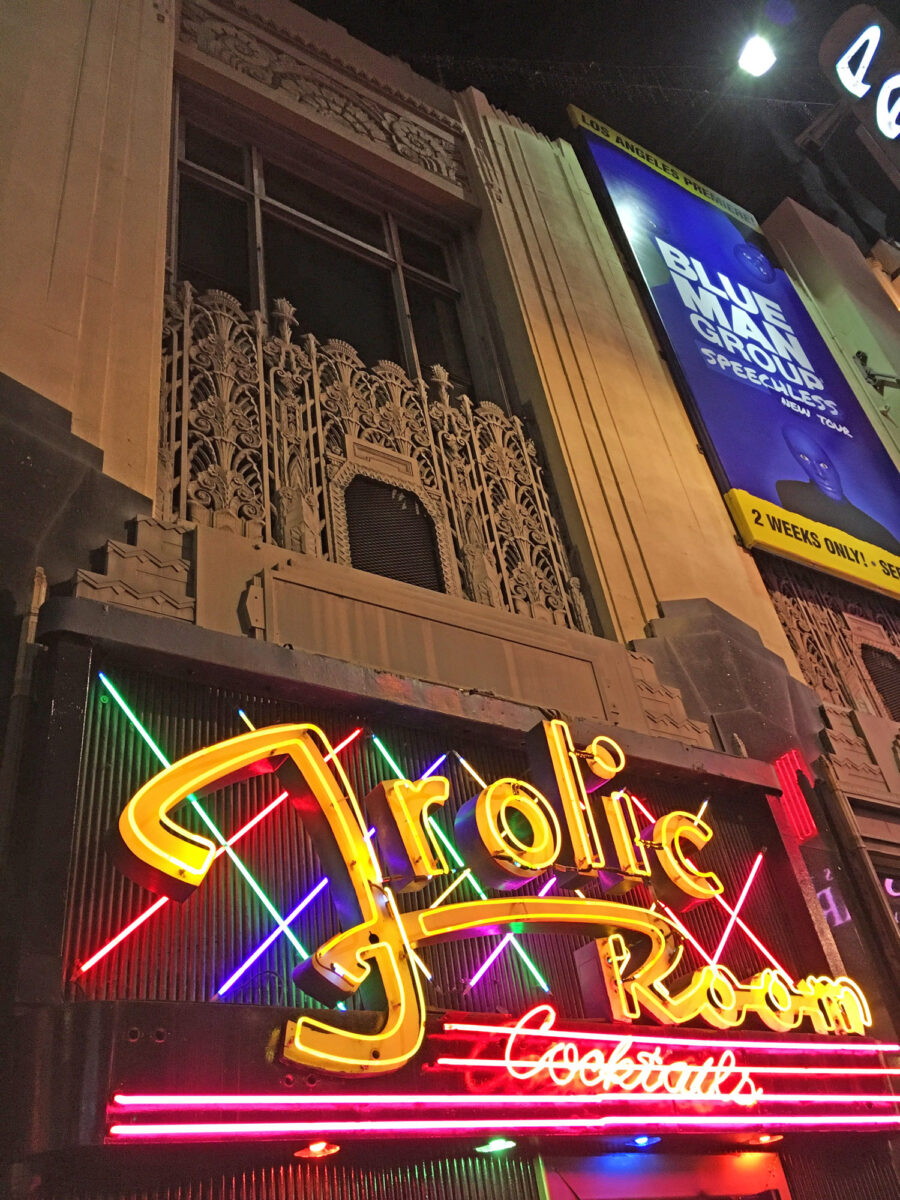
I stopped in for a beer, eavesdropping on a young guy down the bar who was talking about Quentin Tarantino.
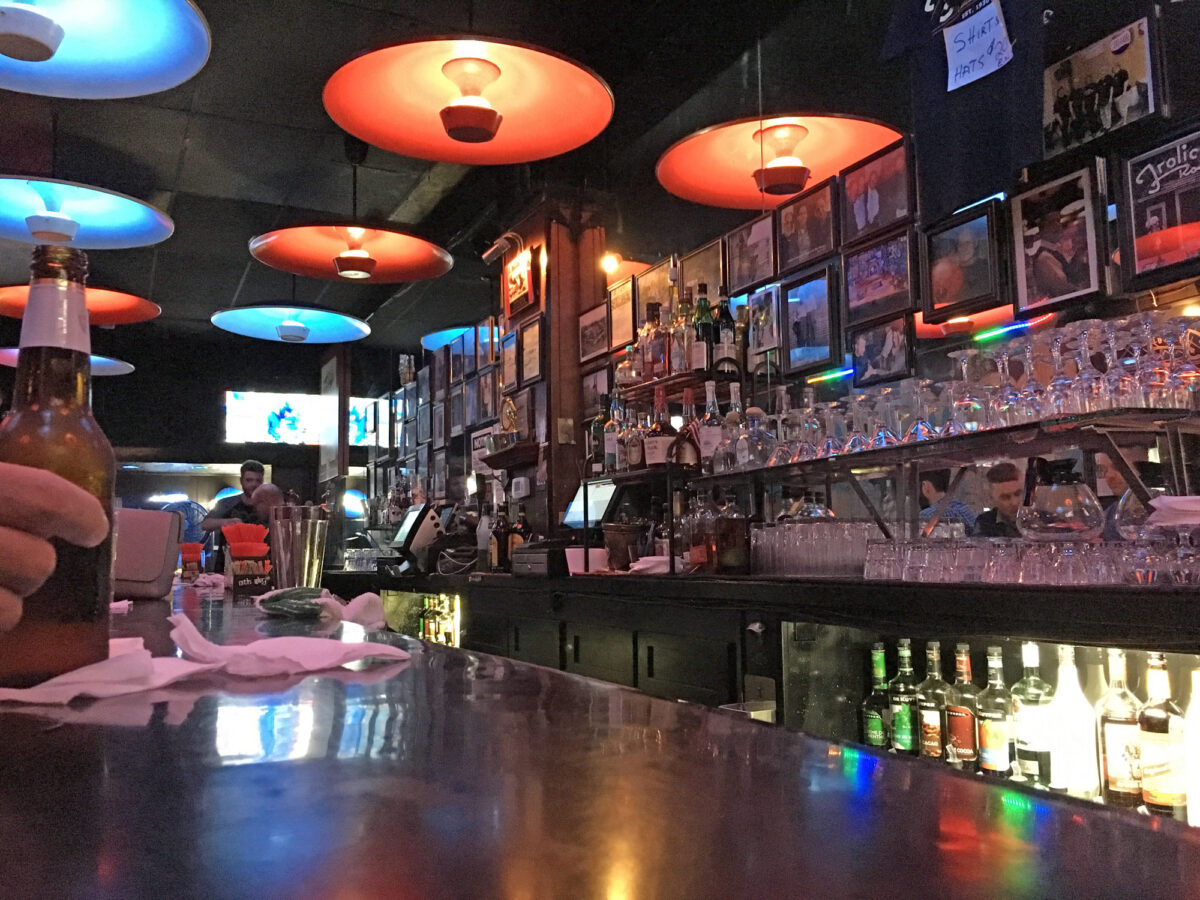
CINERAMA DOME
I saw a movie on the curved screen at the Pacific Theatre’s Cinerama Dome—a new digital restoration of the 1956 travelogue documentary Seven Wonders of the World. Like other movies in the Cinerama format, it was filmed with three side-by-side cameras. That triptych is projected onto the curved screen inside this geodesic dome.
I watched half of the movie from a seat close to the screen, which created an odd effect: The images off on the far left and far right sides were in my peripheral vision if I looked straight ahead. If I glanced over to one of the sides, the images there were remarkably sharp and focused.
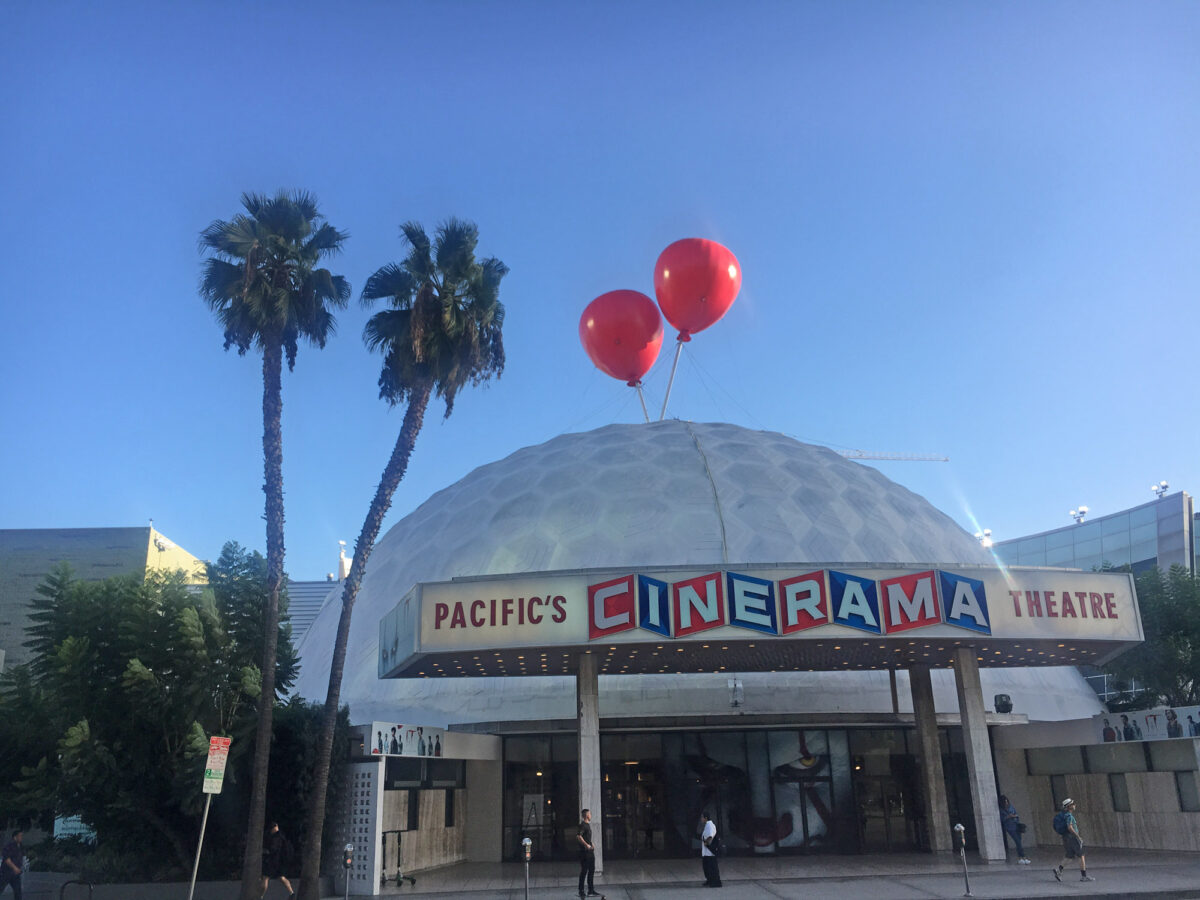
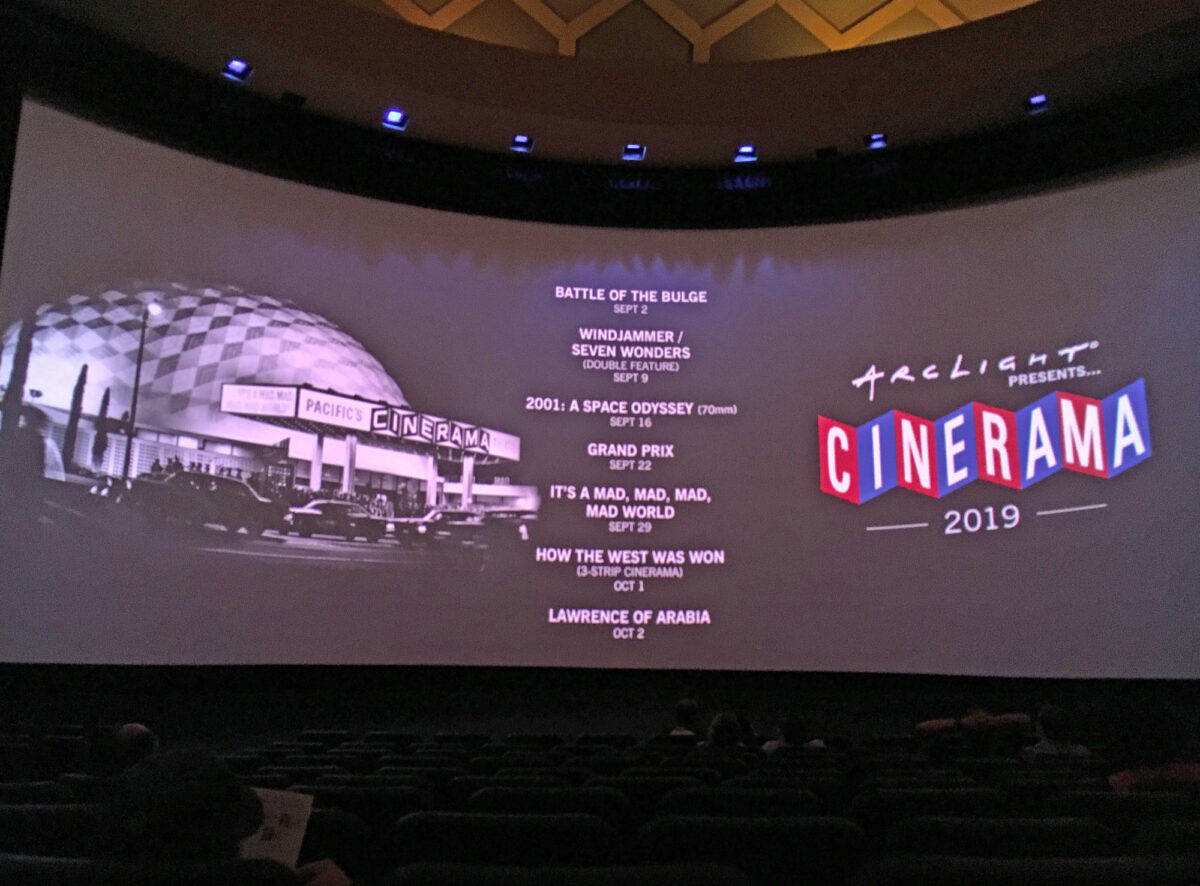
ALTO NIDO APARTMENTS
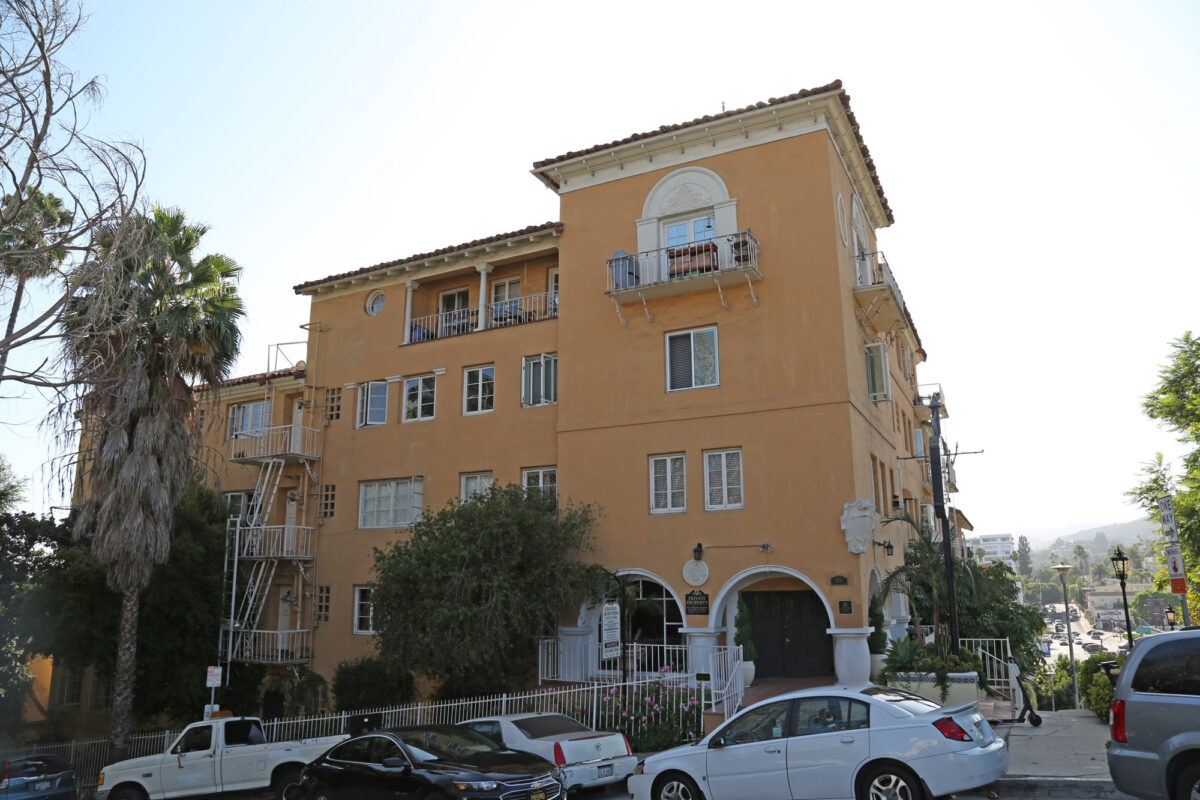
HOLLYWOOD CENTER MOTEL
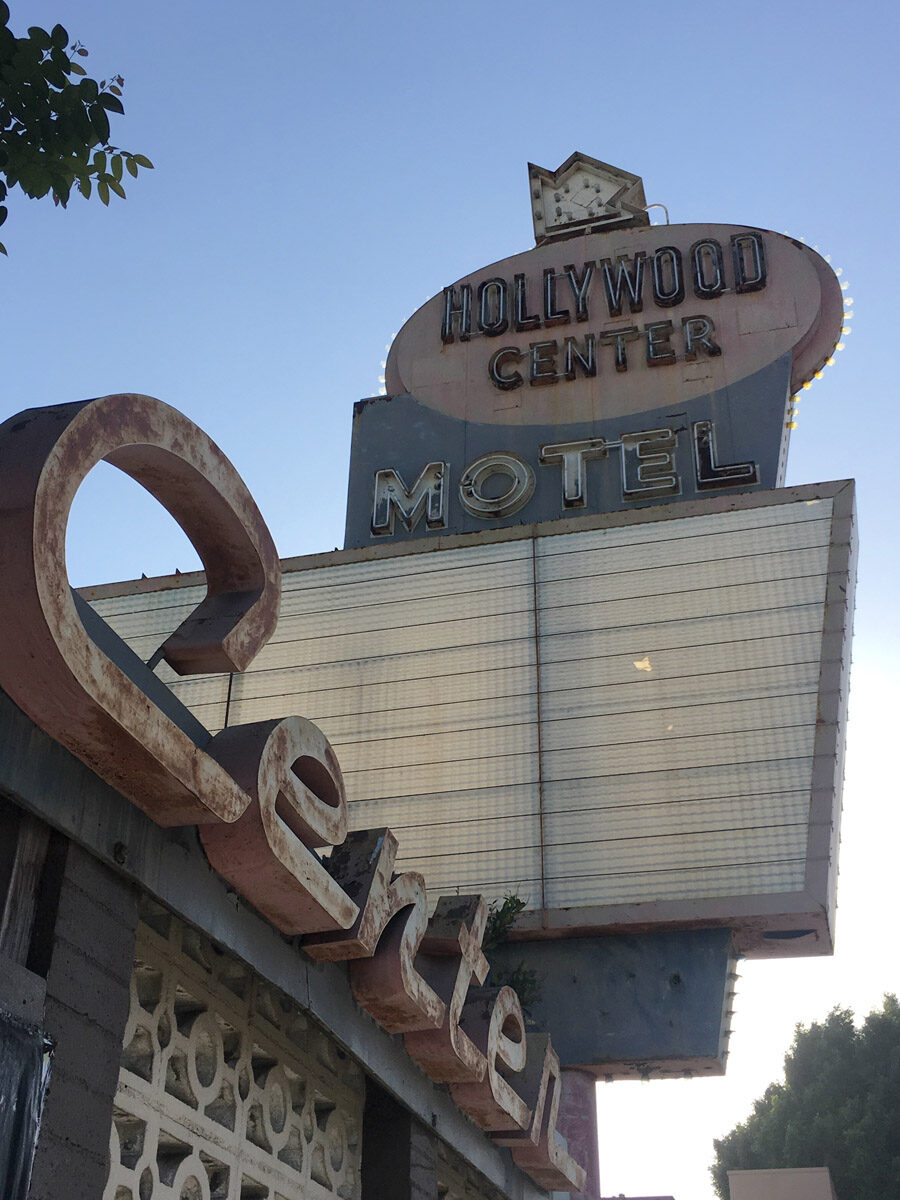
HOLLYWOOD ATHLETIC CLUB
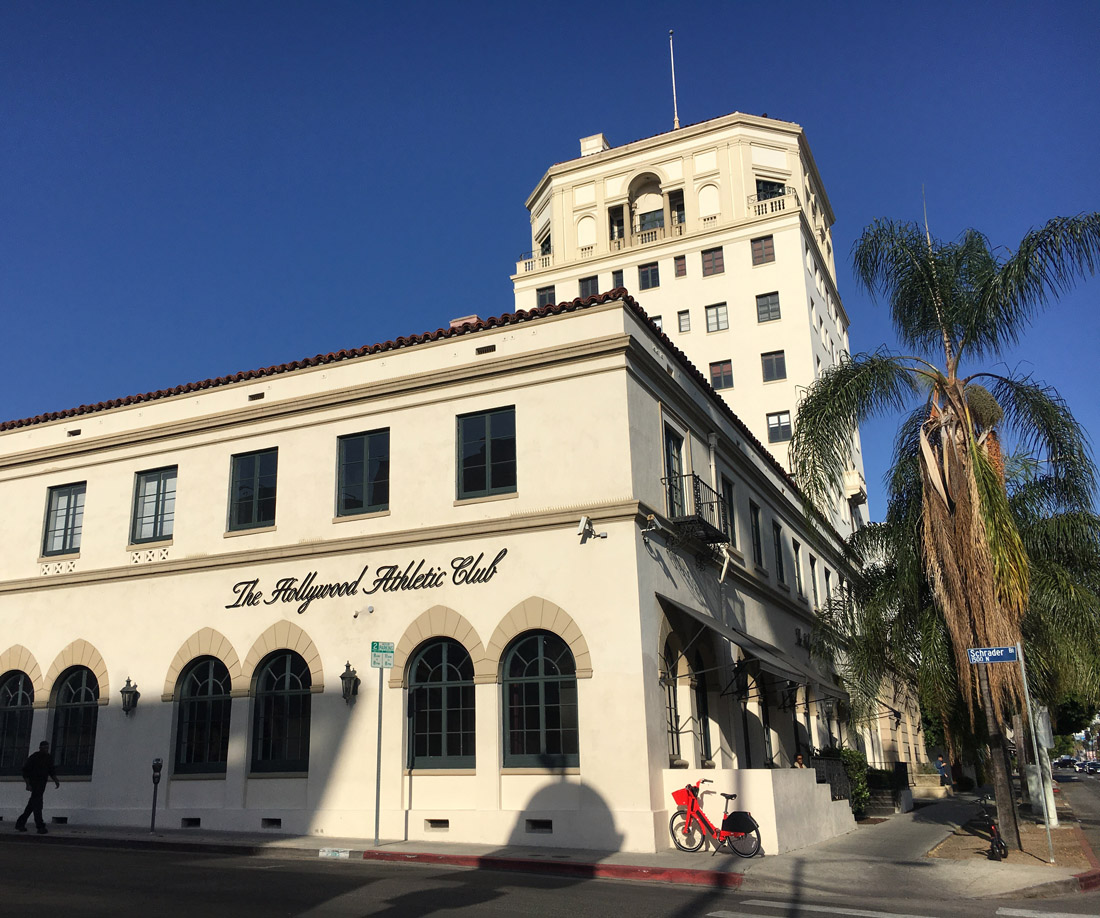
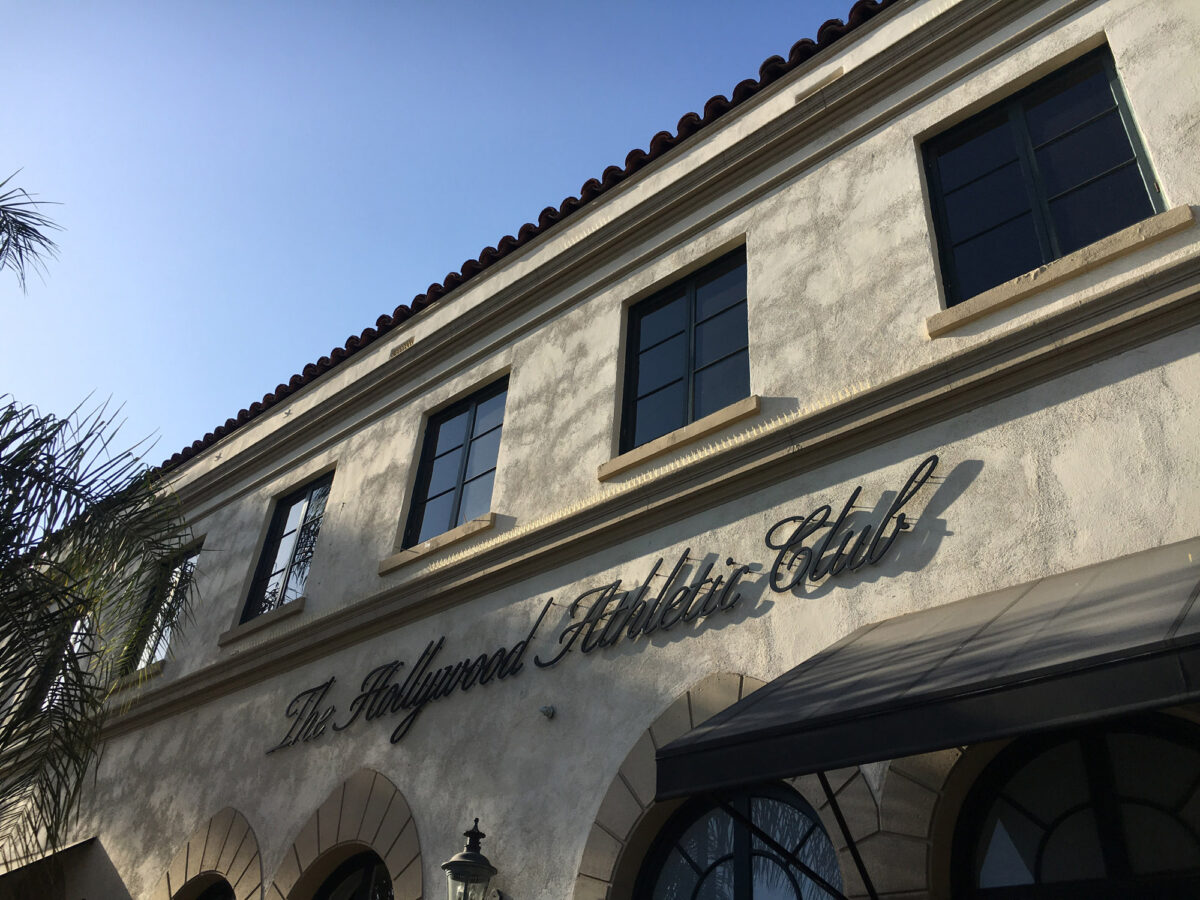
CROSSROADS OF THE WORLD
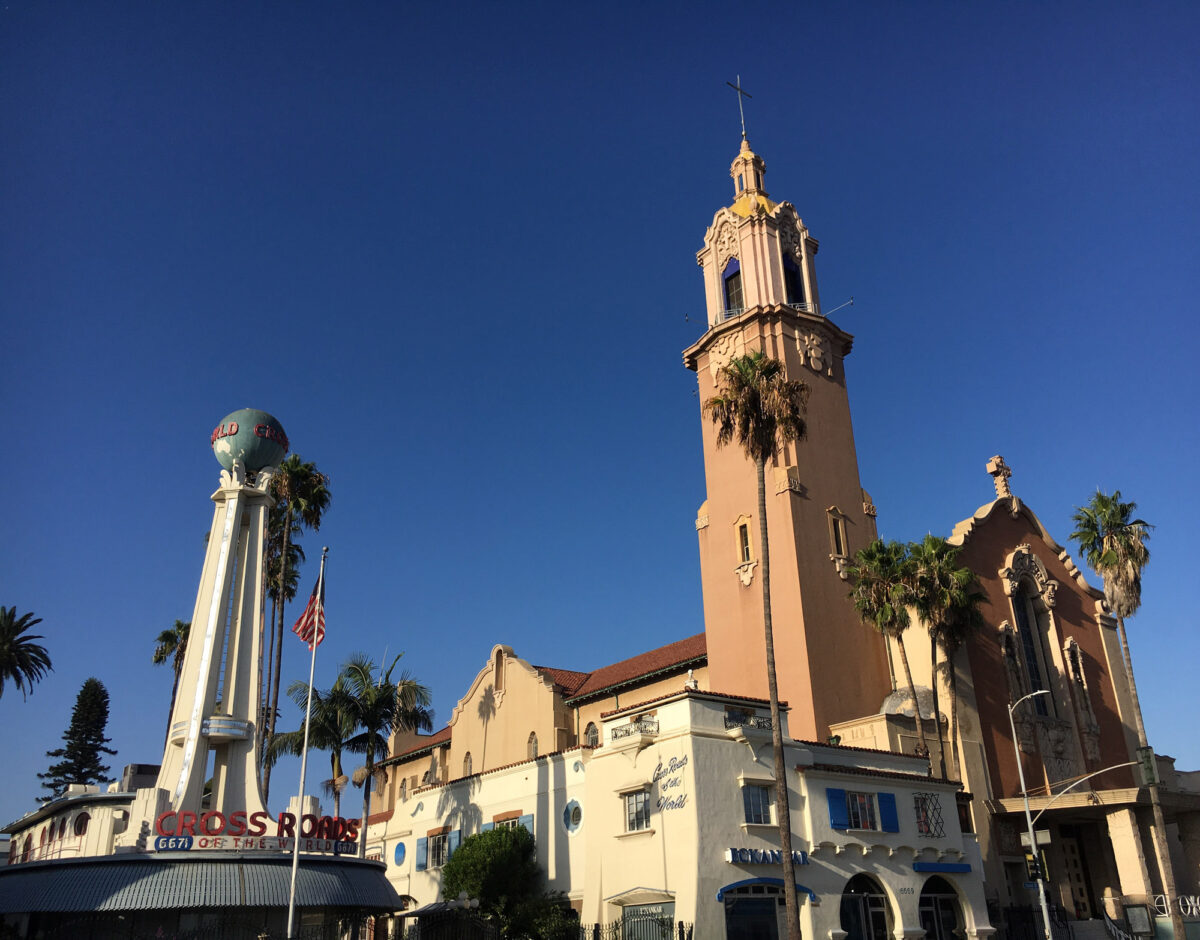
CAPITOL RECORDS
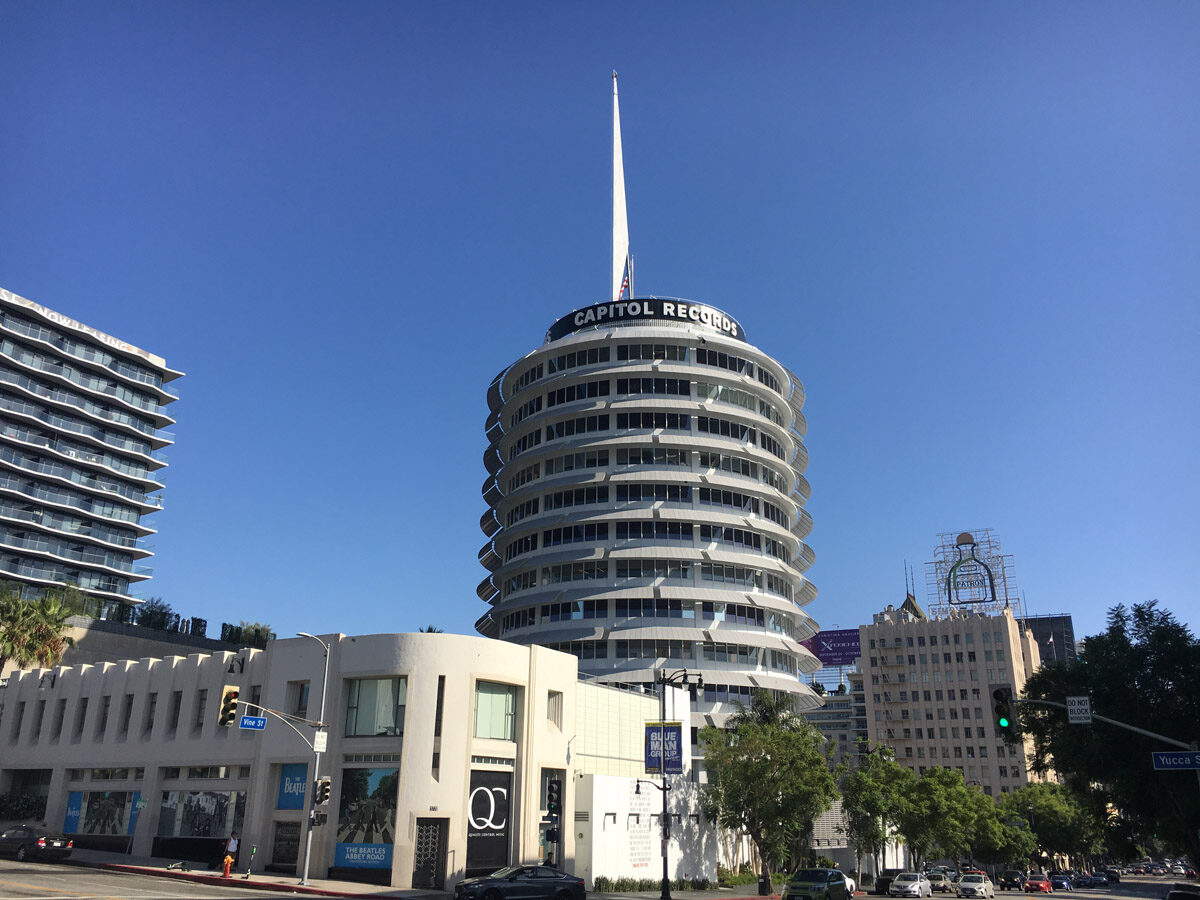
MURAL AT SUNSET AND VINE
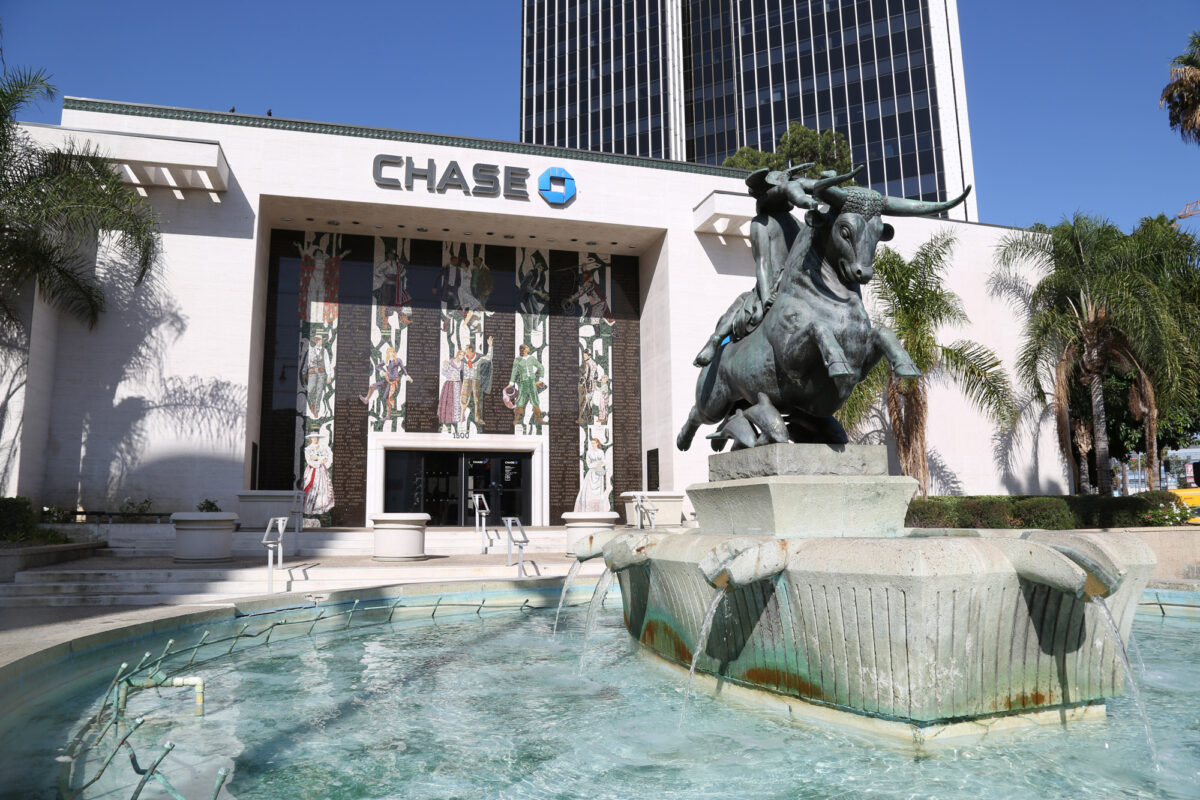
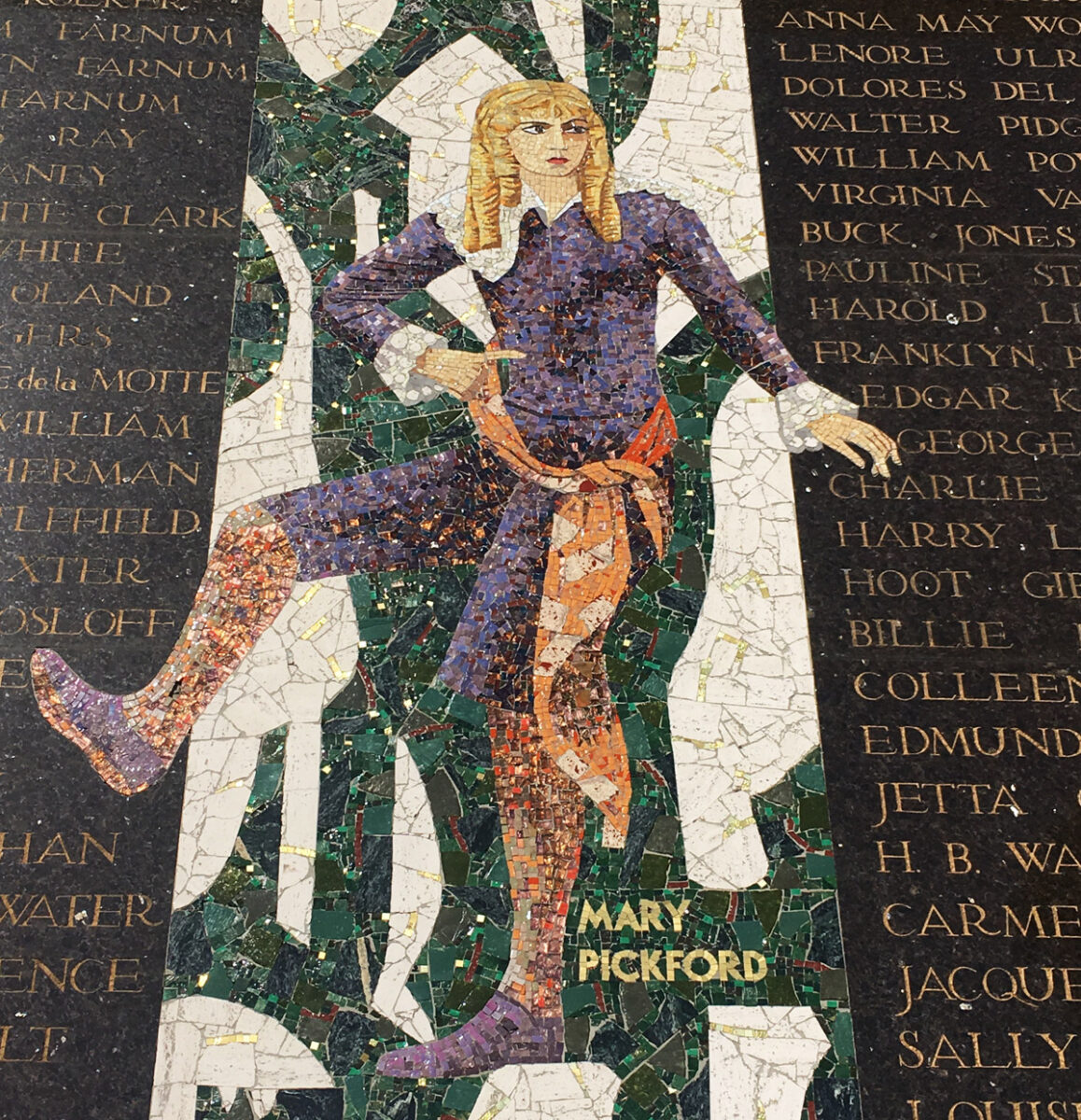
PHILIP MARLOWE’S OFFICE
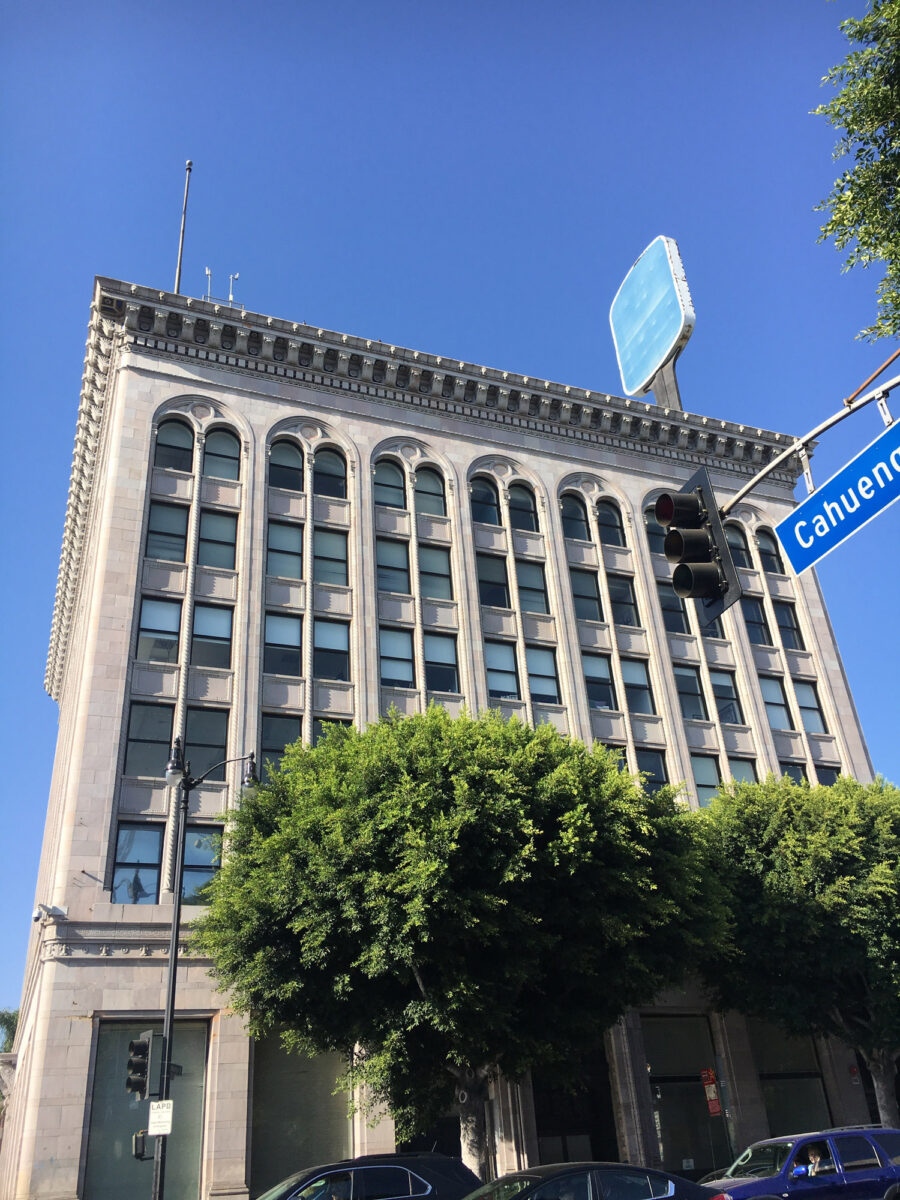
AMOEBA MUSIC
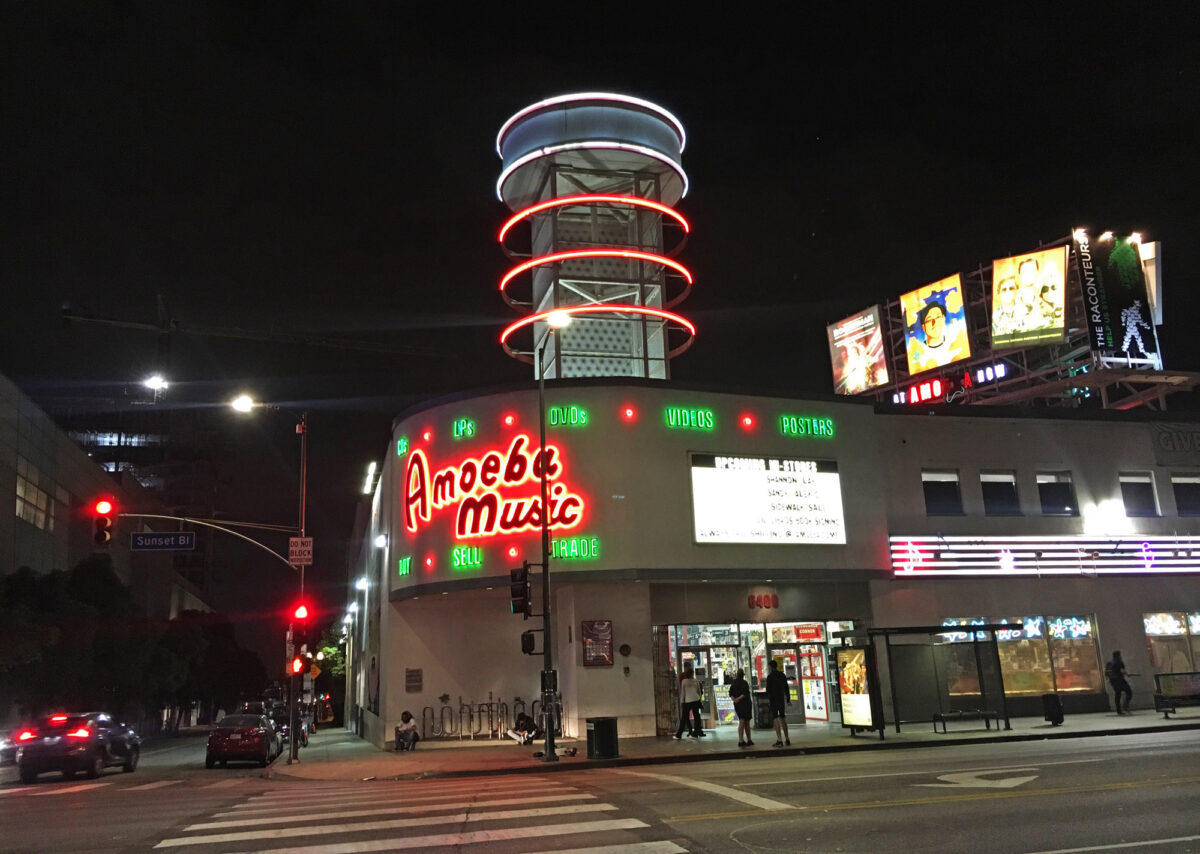

See an INDEX for this series of blog posts.
In this part: Paramount Studios / The Hollywood Walk of Fame / The death scene in Inland Empire / The Frolic Room / Cinerama Dome / Alto Nido Apartments / Hollywood Center Motel / Hollywood Athletic Club / Crossroads of the World / Capitol Records / Mural at Sunset and Vine / Philip Marlowe’s office / Amoeba Music
Photos by Robert Loerzel unless noted otherwise.